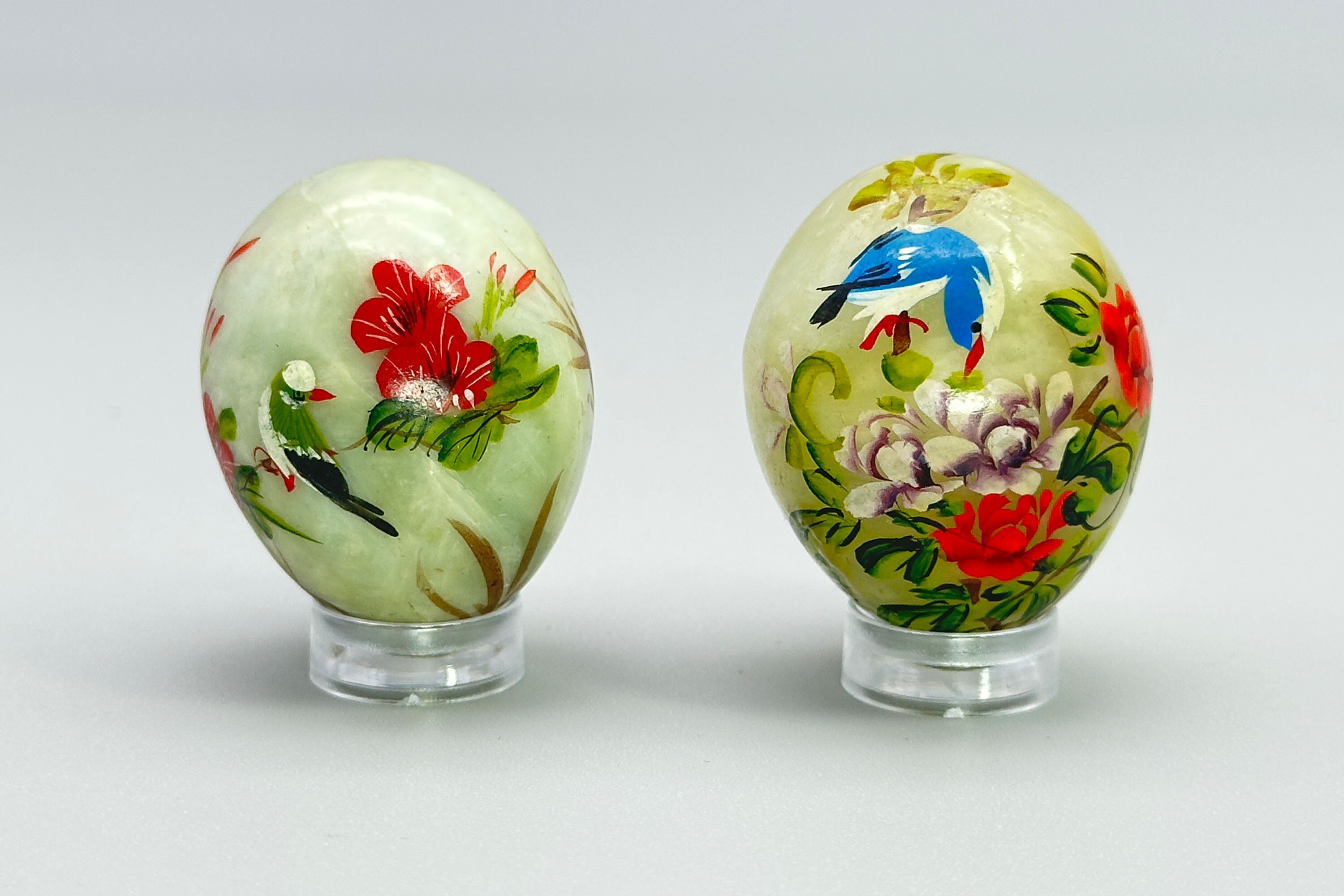Chinese & Japanese Works of Art
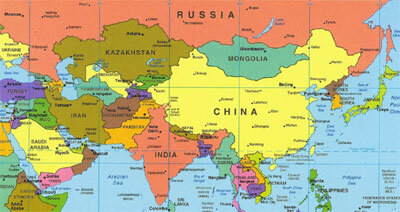
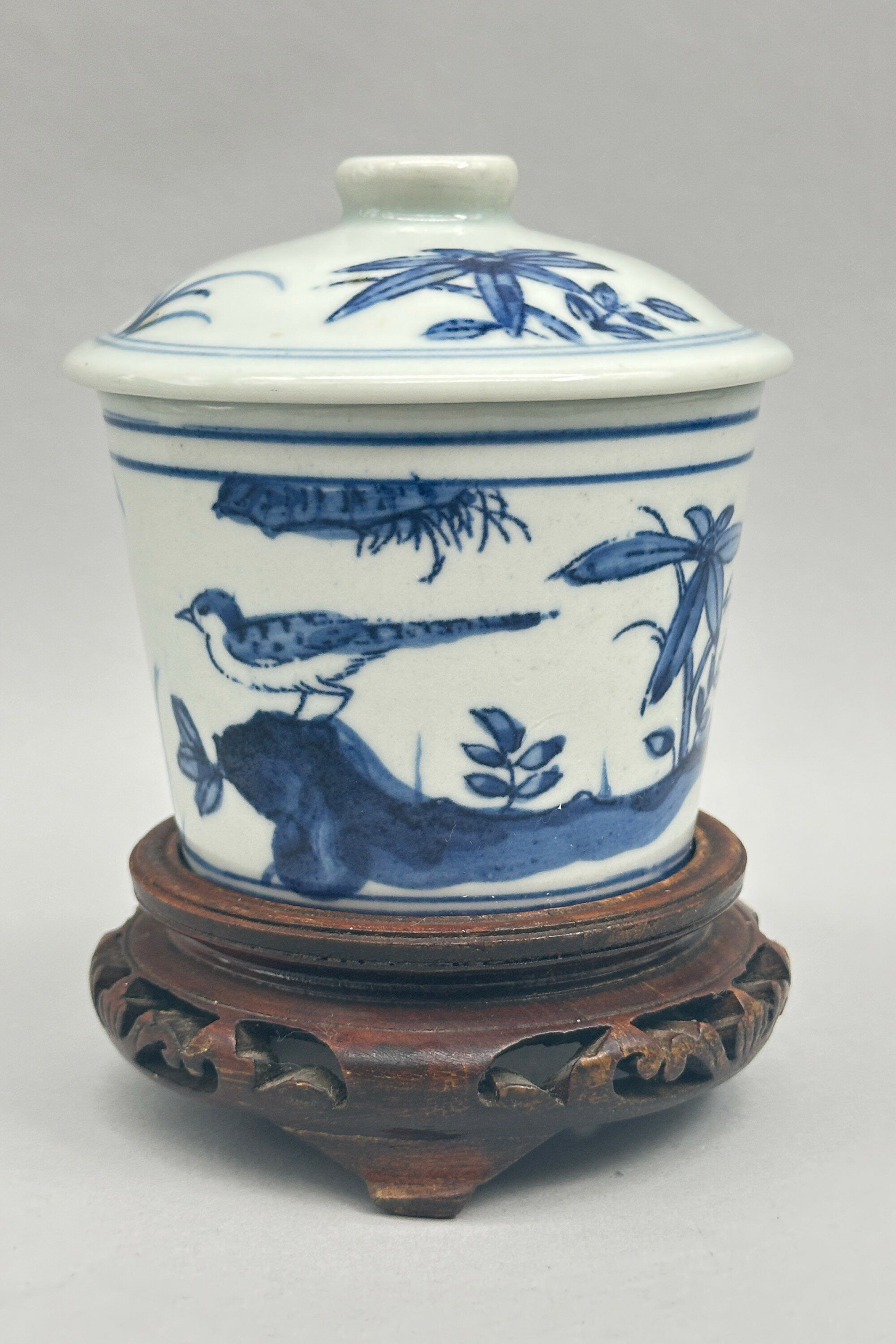
Chinese Small Blue and White Potiche and Cover with wood stand, late C20th
Price: £45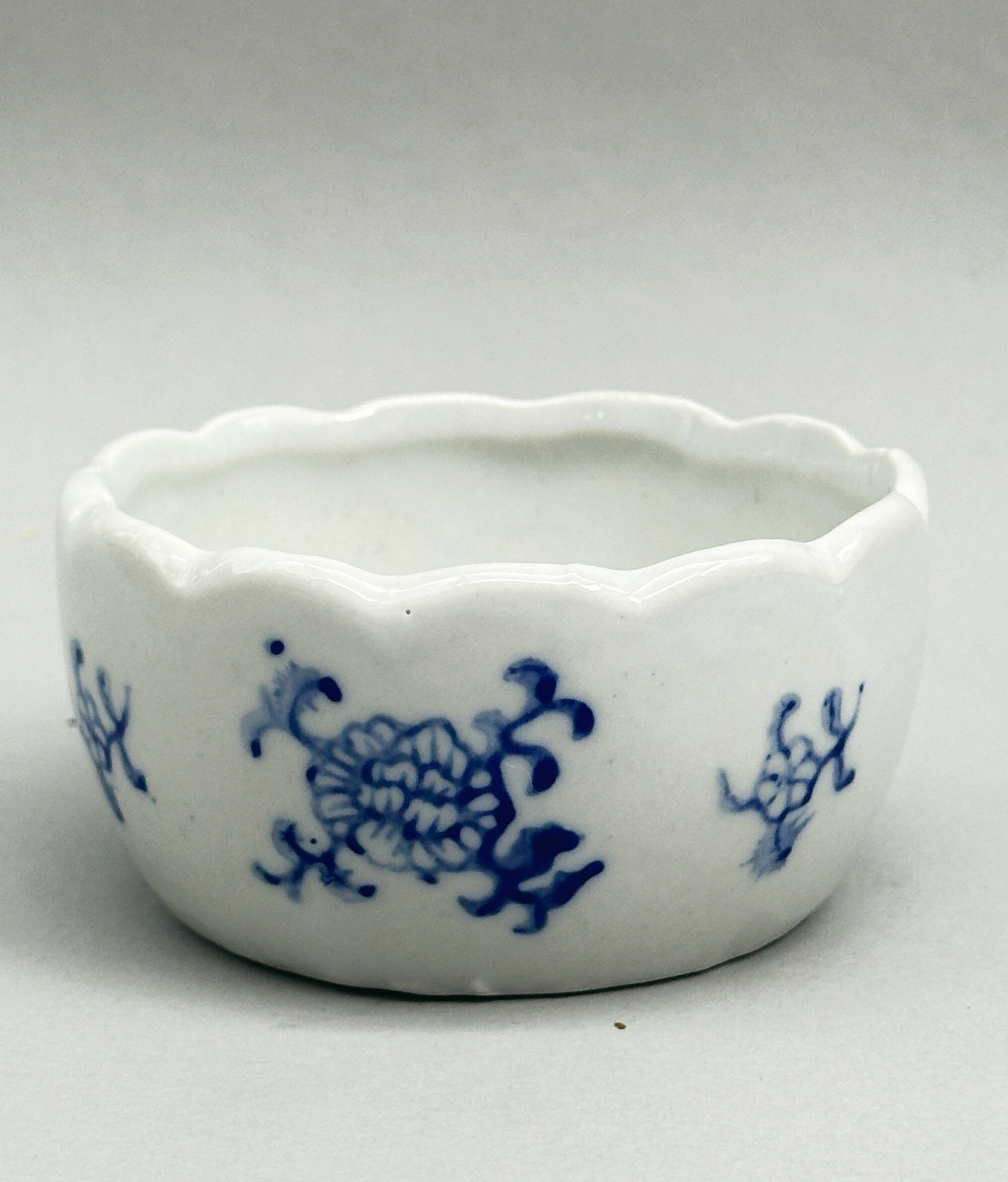
Japanese Arita Brushwasher, C20th
Price: £25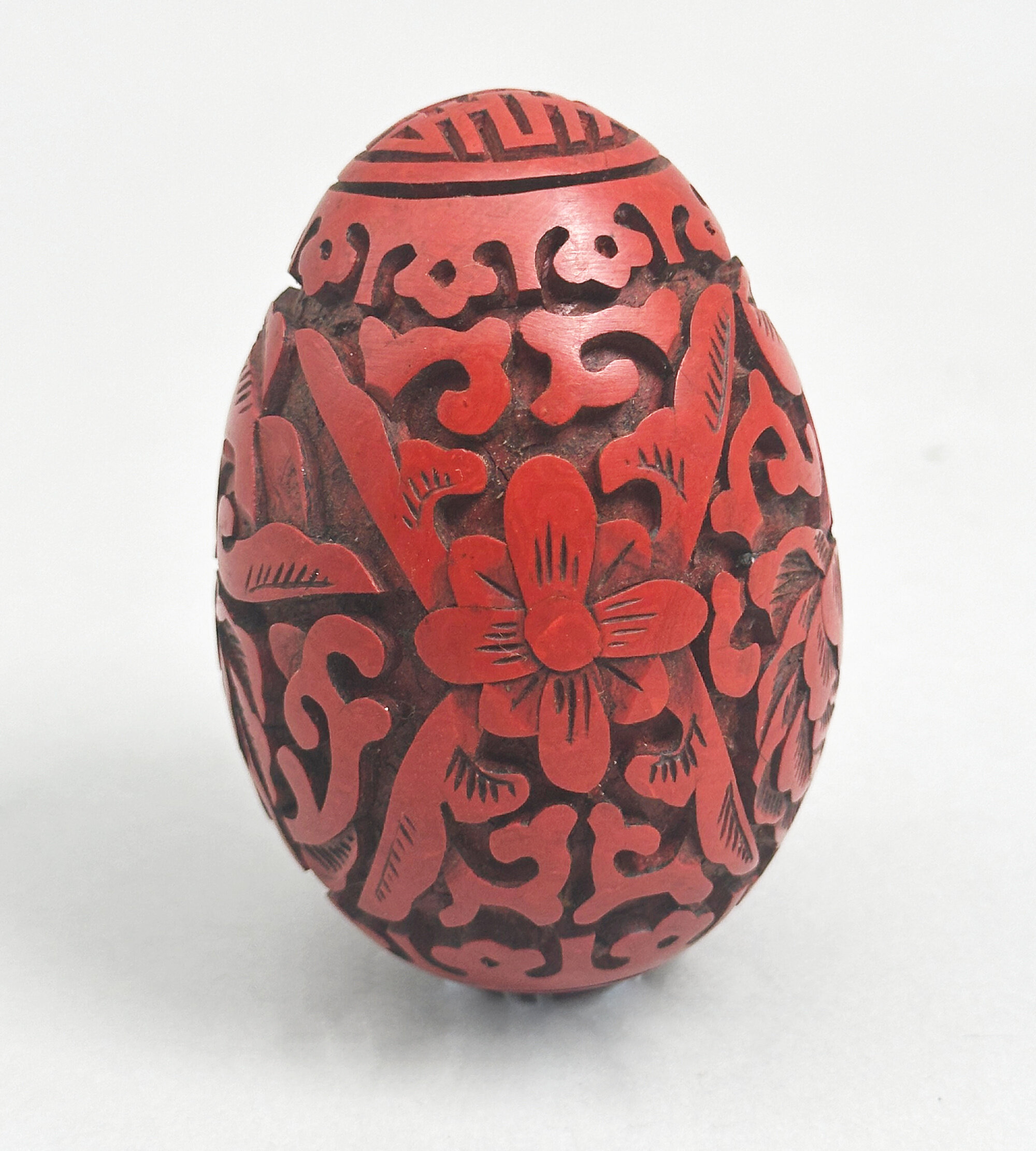
Chinese Cinnabar Lacquer Egg, C20th
Price: £55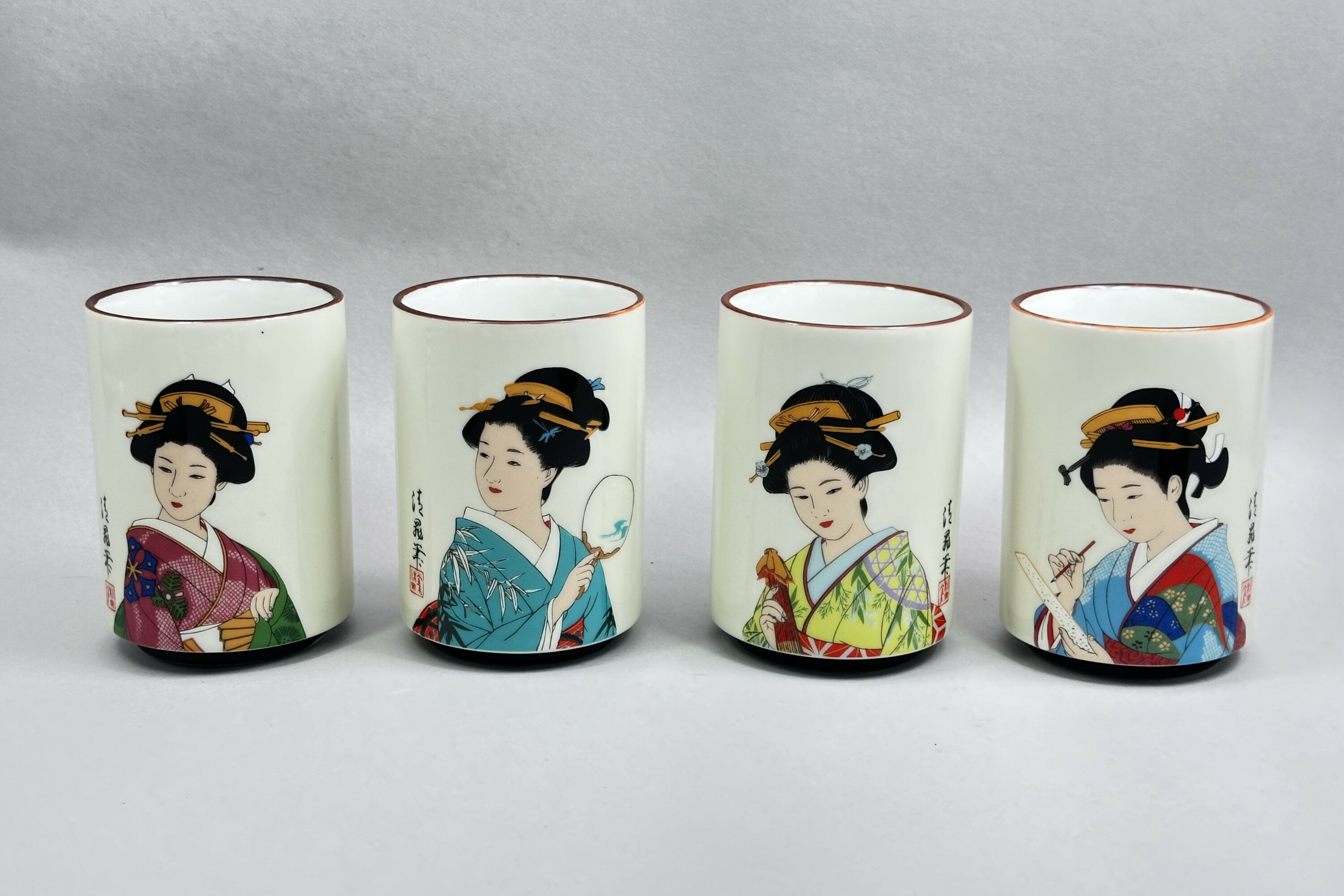
Set of Four Japanese Ceramic Beakers decorated Geisha, late C20th
Price: £40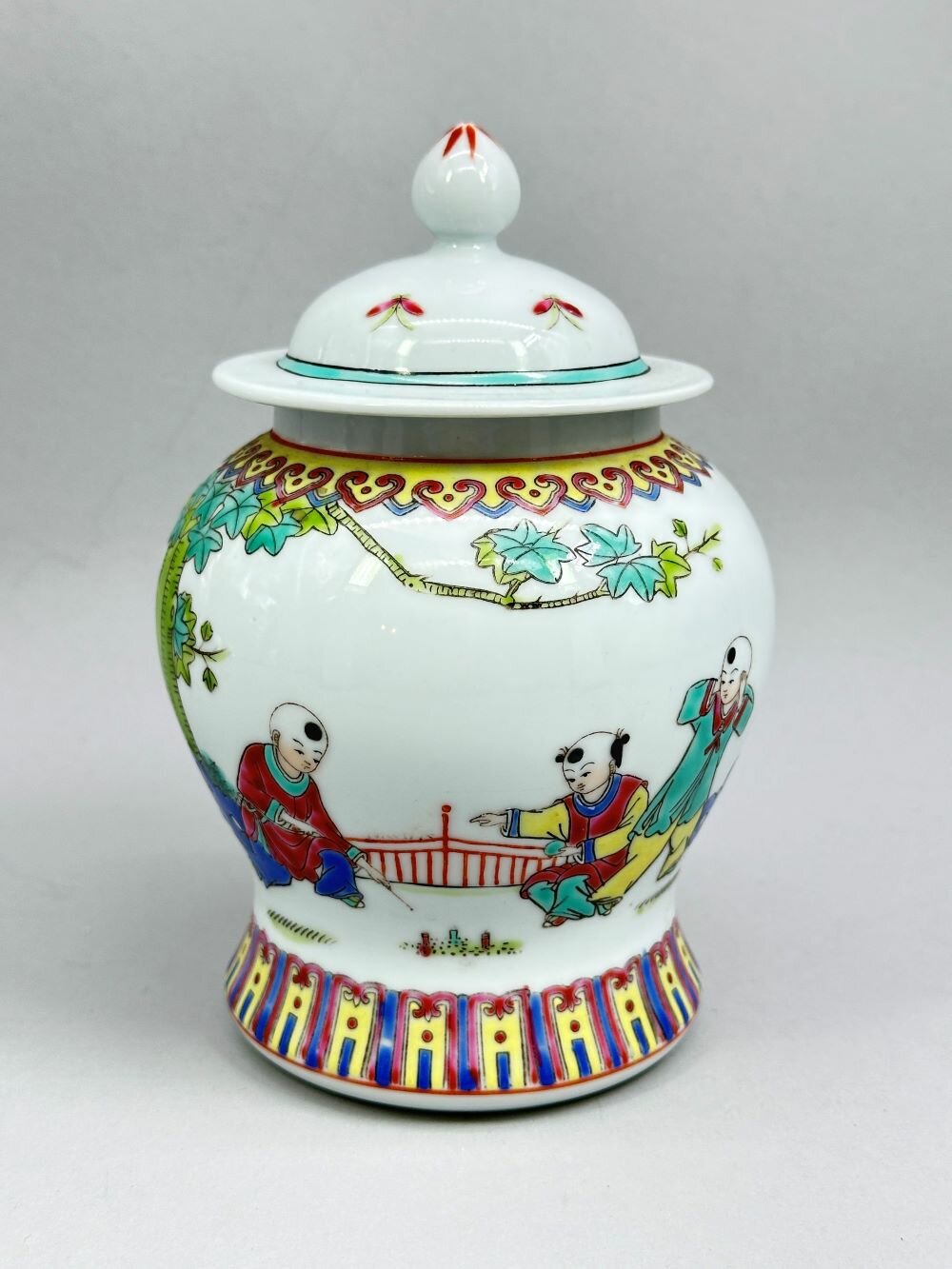
Chinese Republican Style Famille Rose small Baluster Jar and Cover, late c20th
Price: £20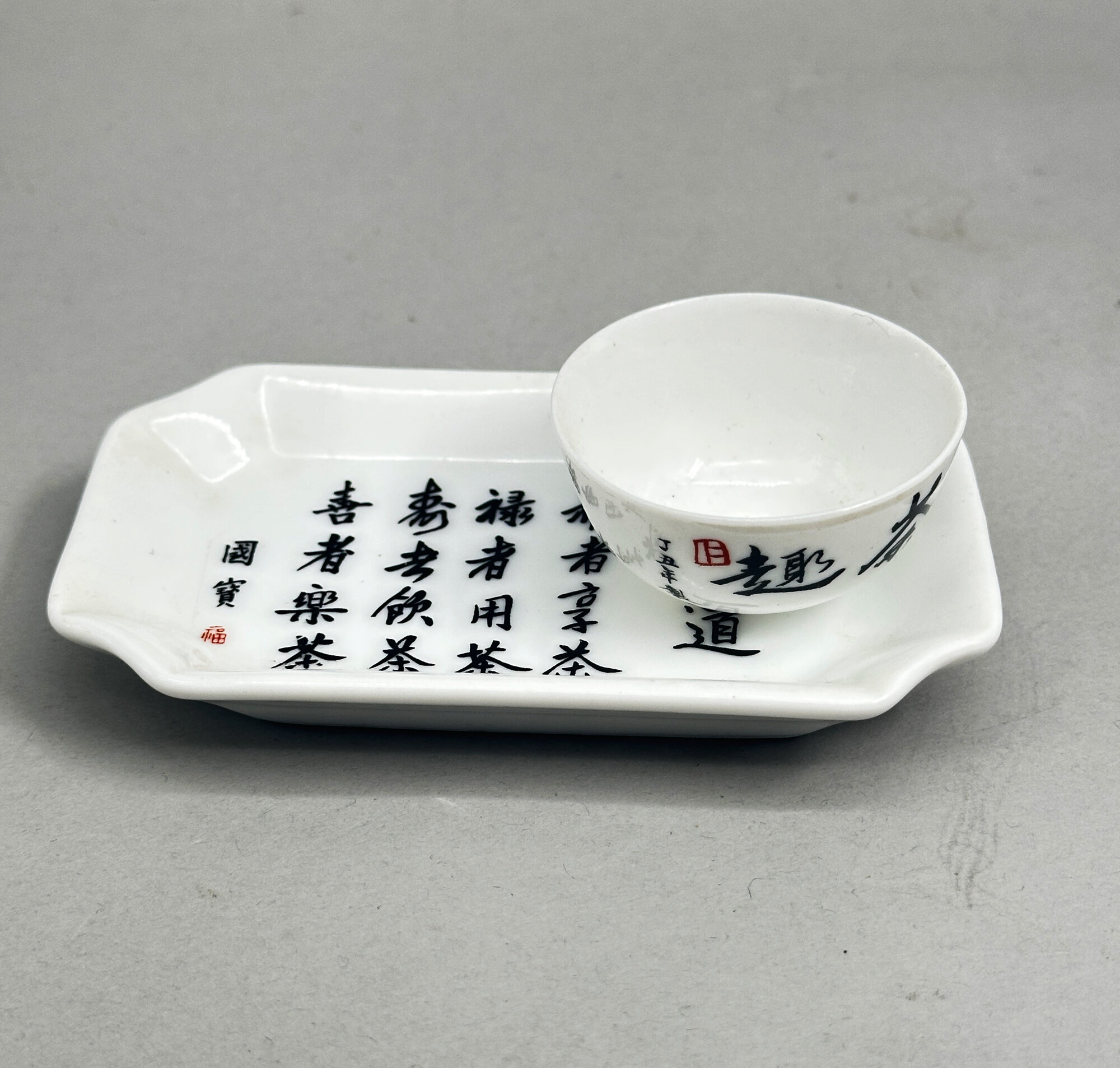
Chinese Porcelain Teabowl and Spoon Tray with calligraphy insciptions, 1997
Price: £15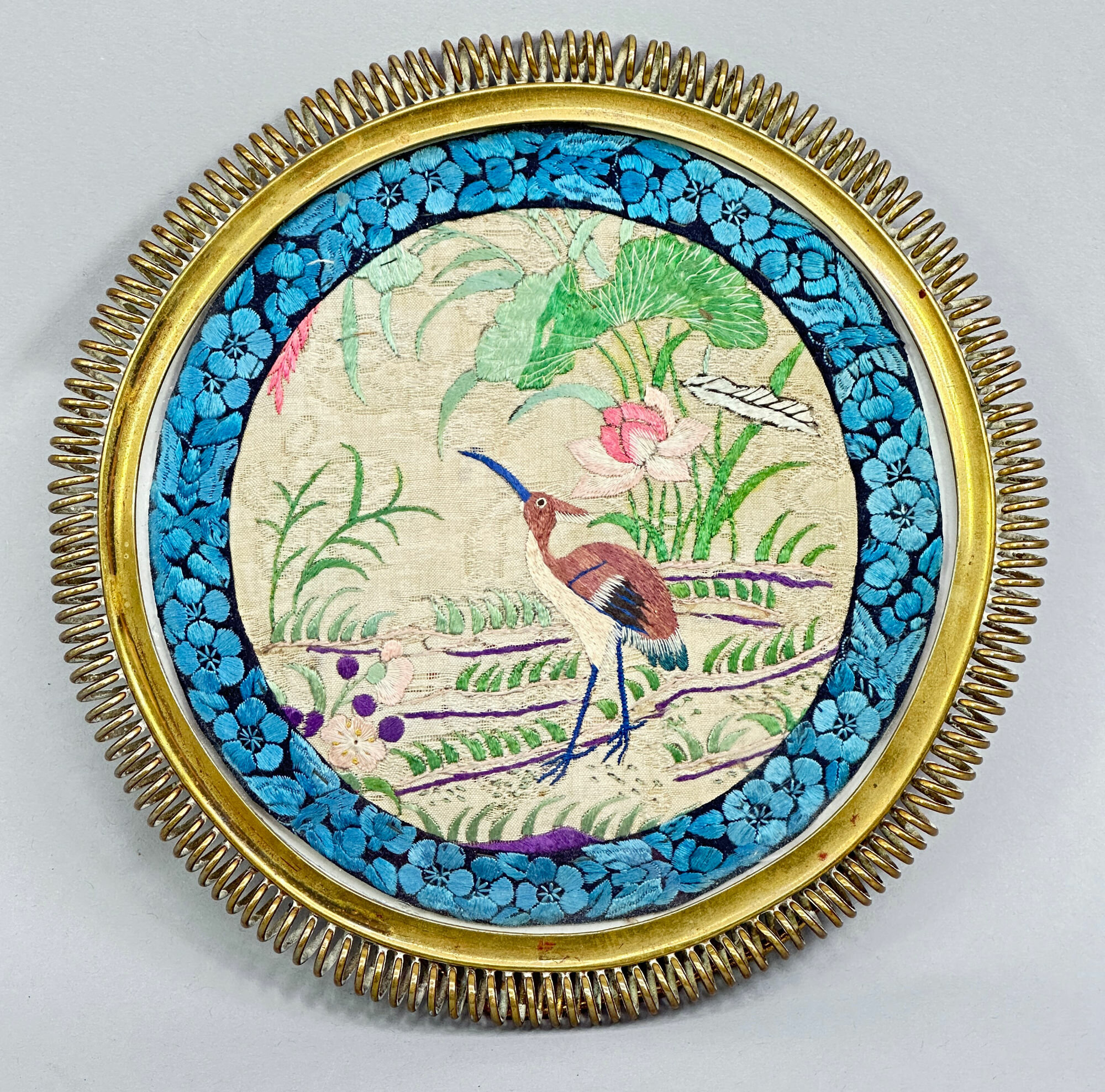
Chinese circular silk textile Panel in later European brass metal Frame, C19th/C20th
Price: £55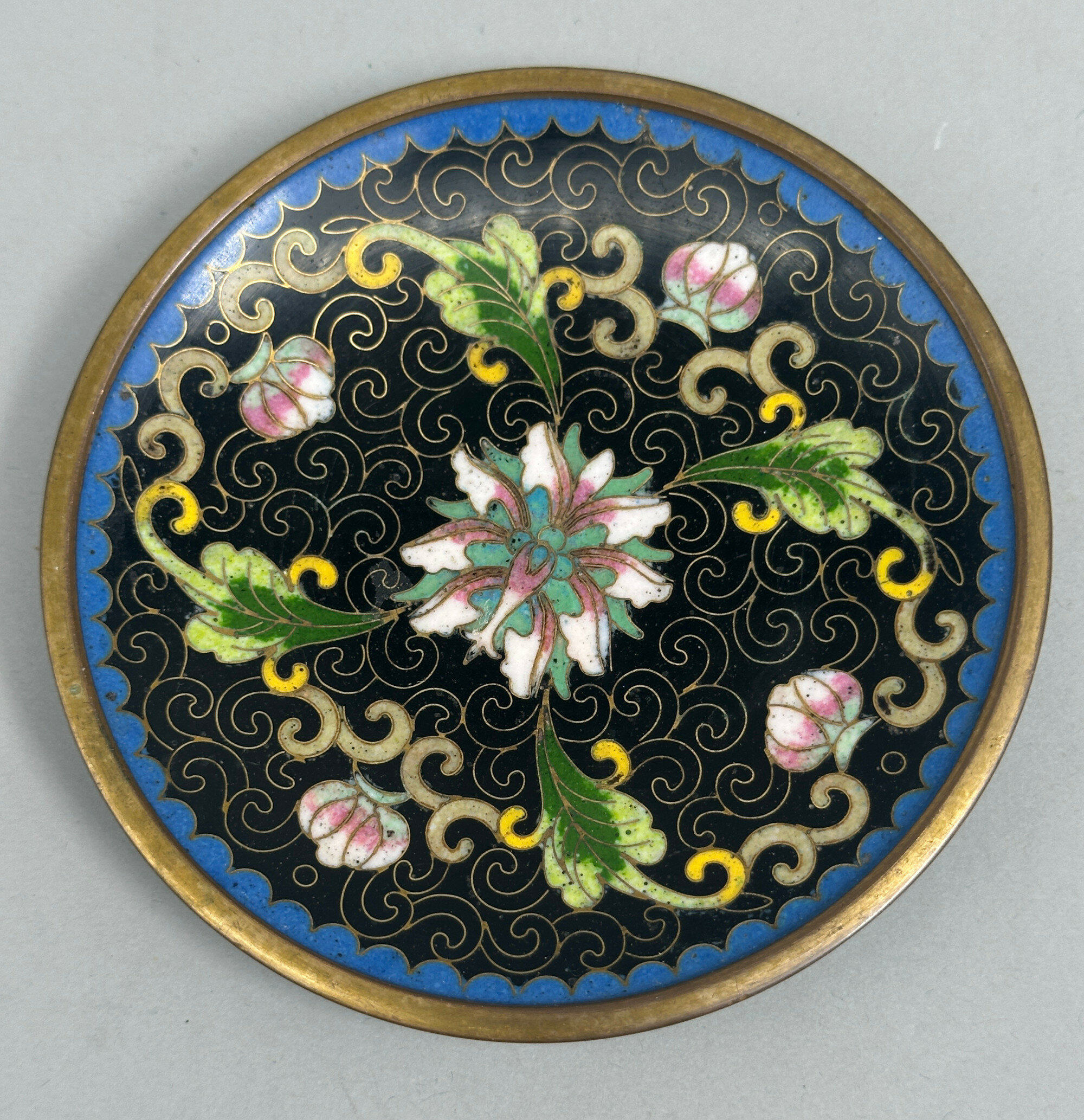
Small Chinese Cloisonné Dish decorated lotus, C20th
Price: £25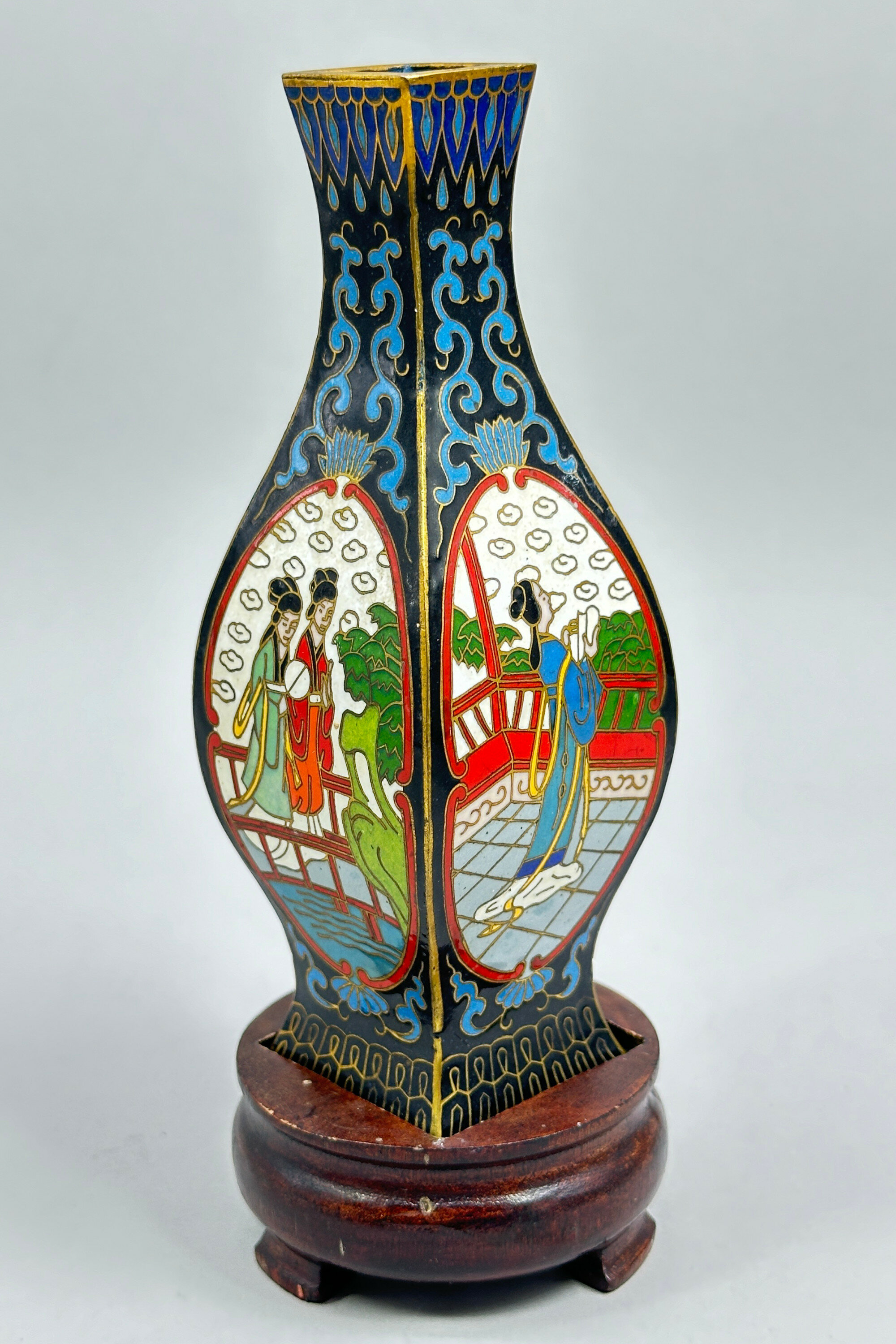
Chinese Cloisonné Square Vase on Stand, C20th
Price: £25The cloisonné technique, in which glass derived enamels were set in wire outlines (the so called ‘cloisons’ from the French word), was developed in China in the early Ming dynasty (1368-1644) and then used throughout, right up until the C20th, indeed pieces are still produced today. The style of enamelling here with fairly bold outlines to the decoration and the use of bright enamel colours suggests a dating here to the mid twentieth century which corresponds to the probable date of the accompanying wood stand. Perhaps intended as a desk ornament or possibly a flower vase, this piece could certainly find a home in a contemporary setting.
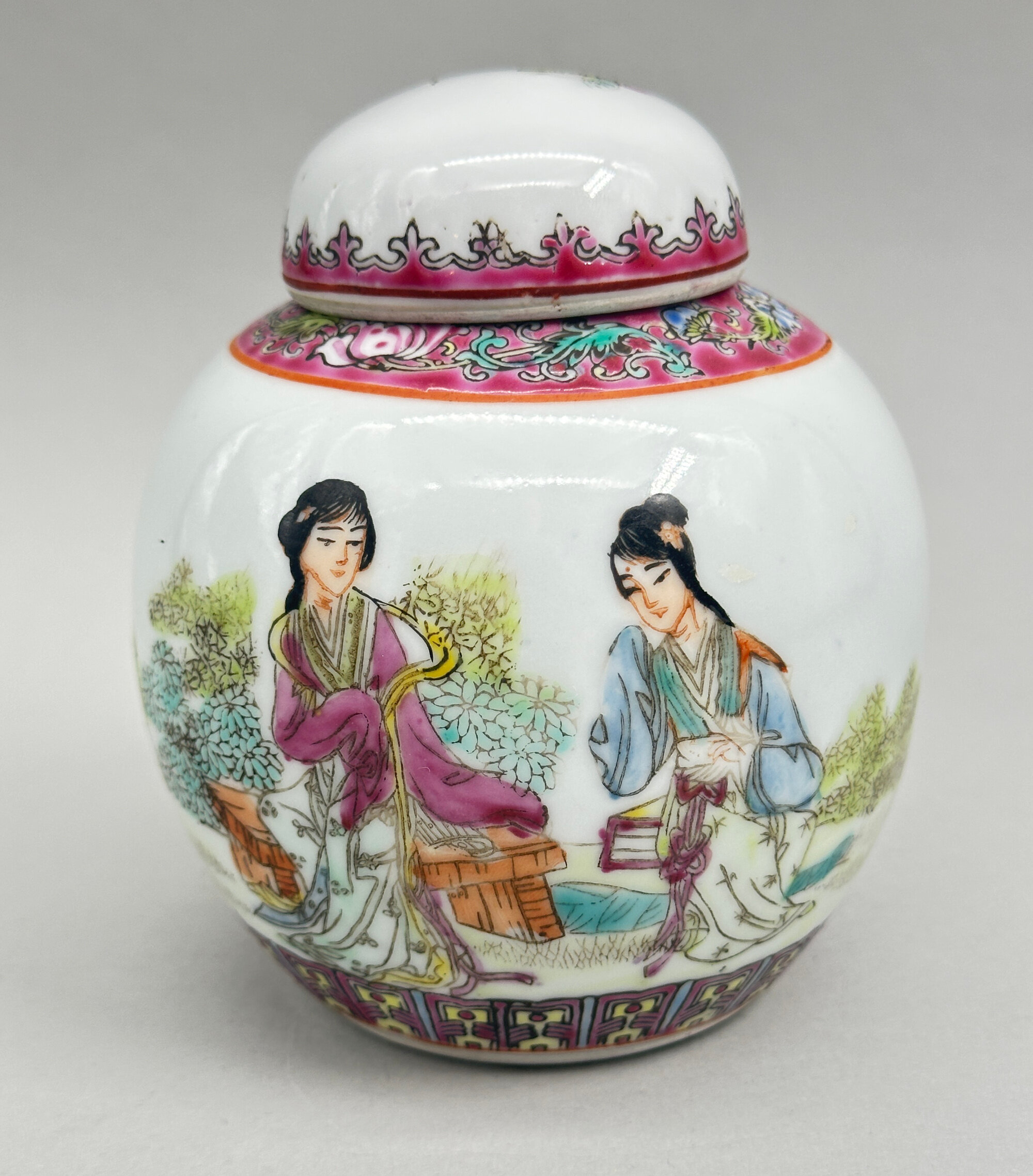
Chinese Republican Style small Famille Rose Ginger Jar and Cover, late c20th
Price: £20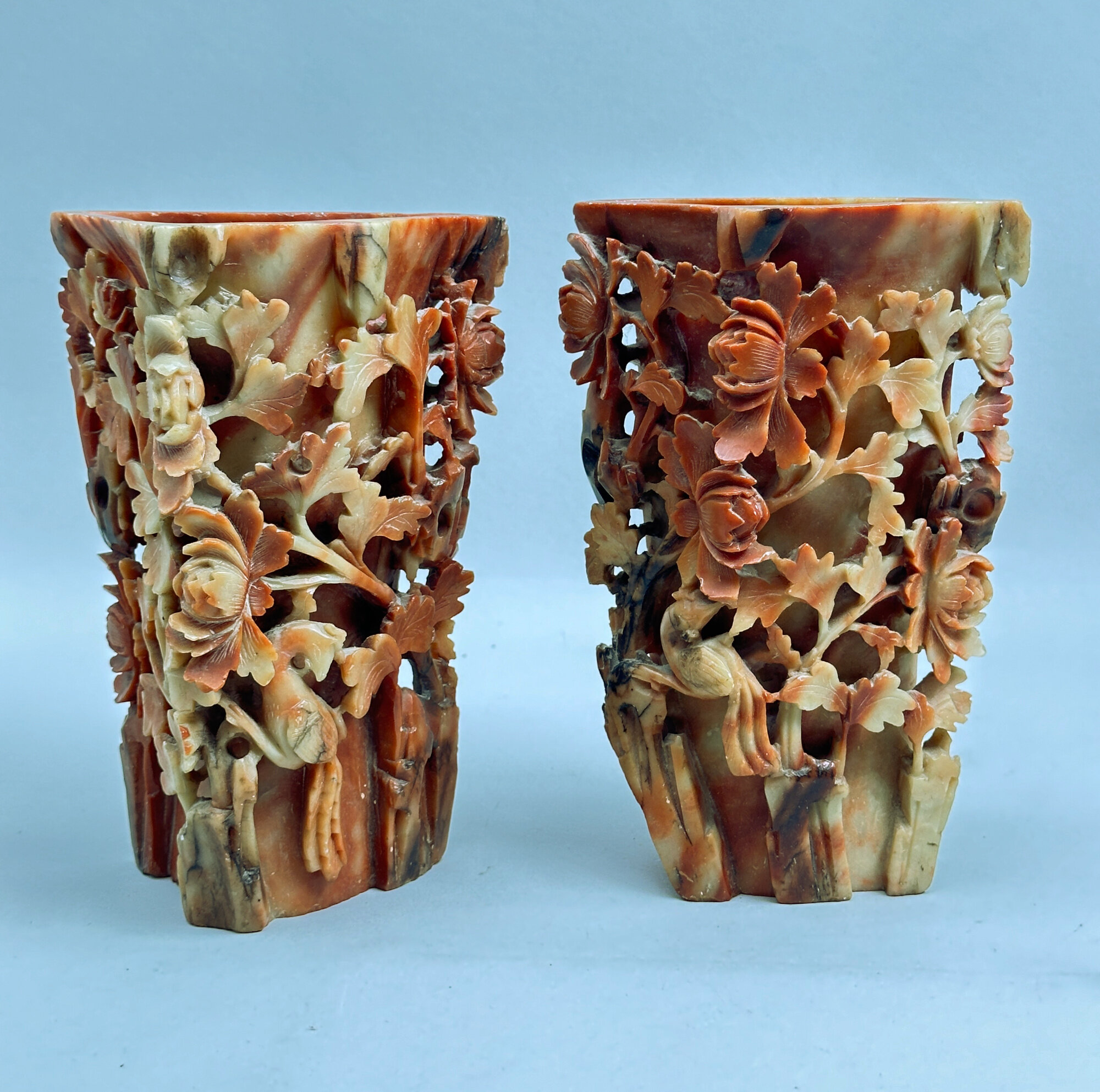
An unusual Pair of Chinese carved Soapstone Vases, circa 1900
Price: £110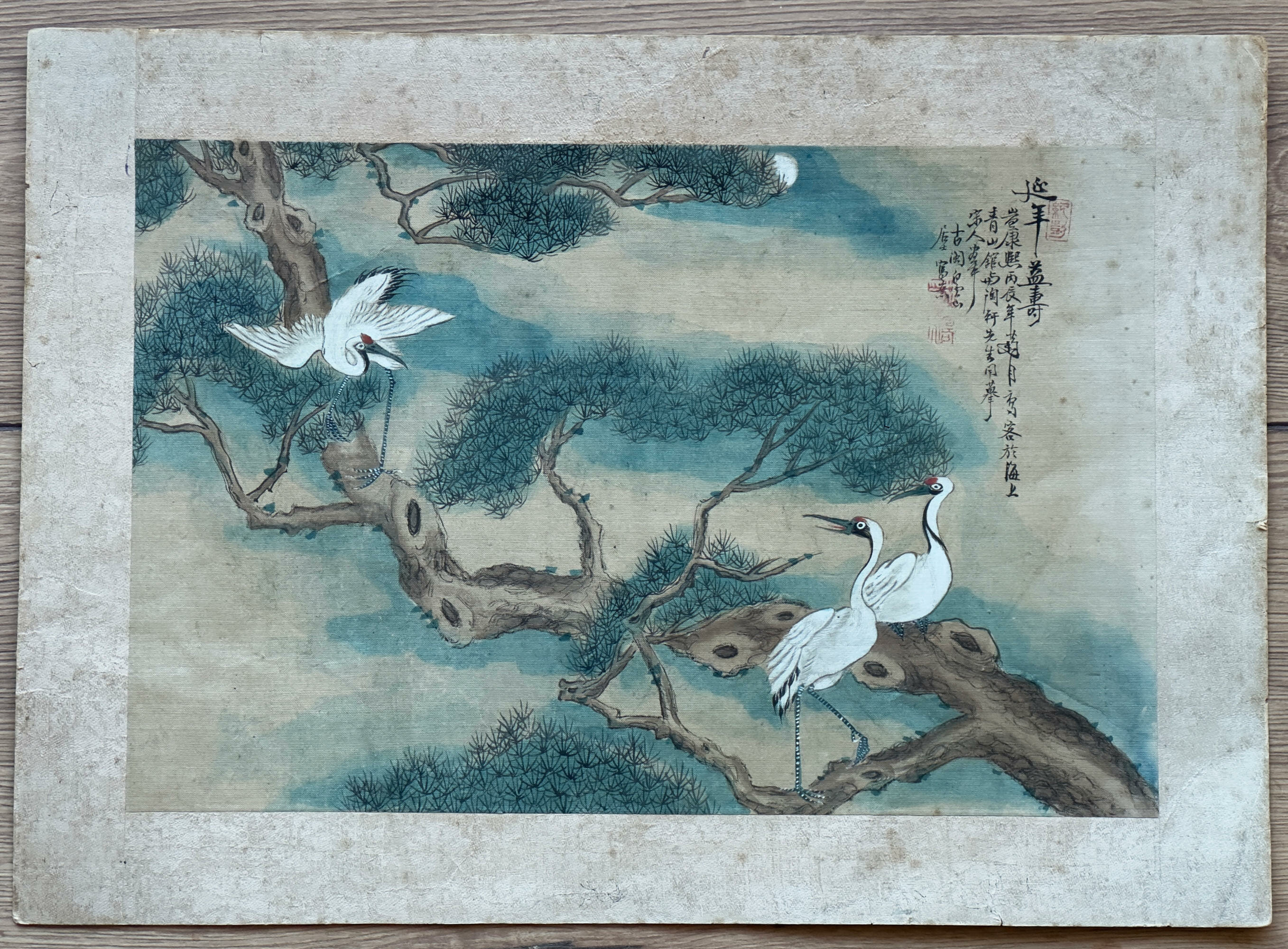
Chinese painting on Silk, Storks and Pine, circa 1900
Price: £25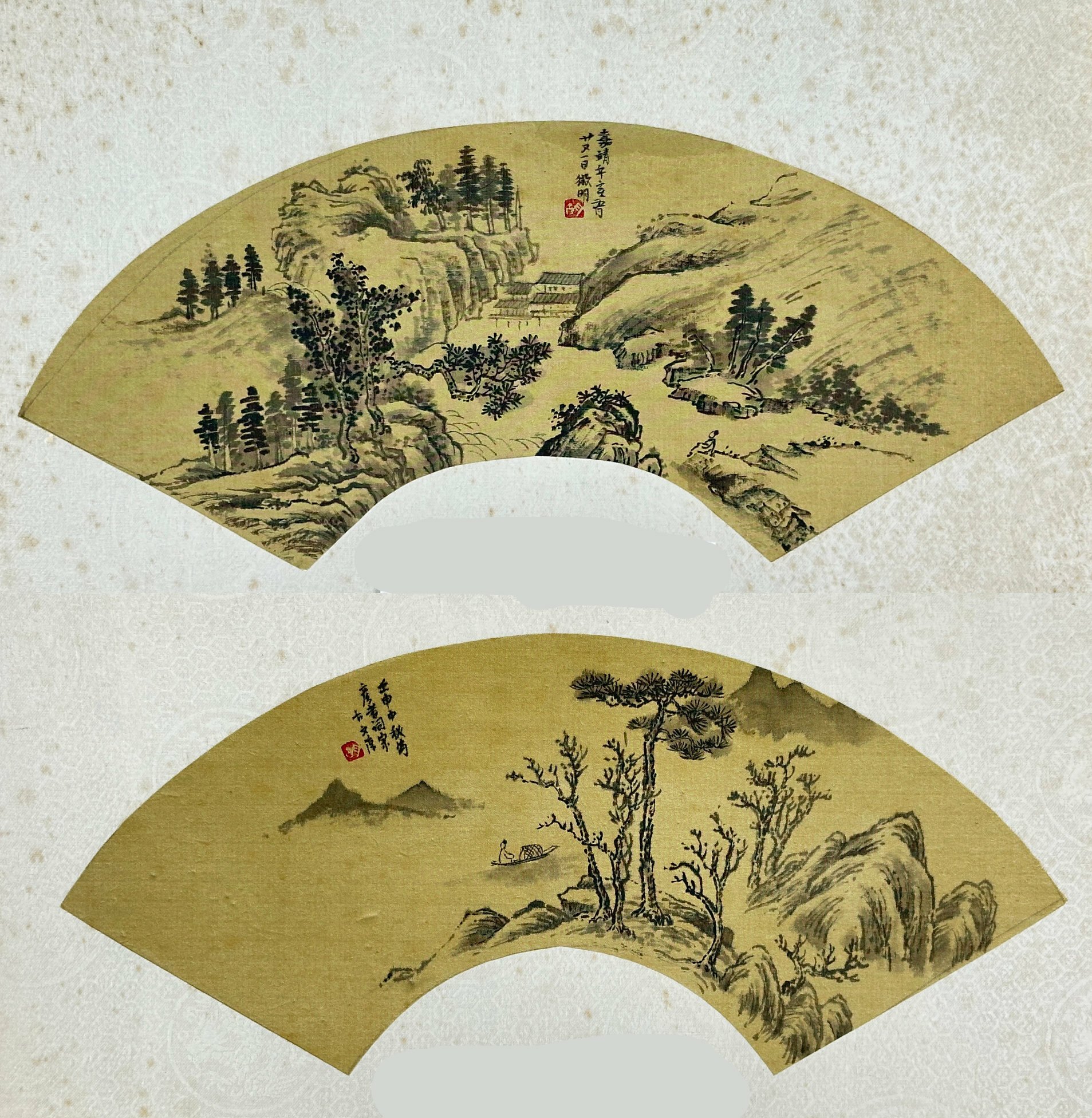
Two Chinese folding Fan Leaves with landscape scenes, now mounted, C20th
Price: £25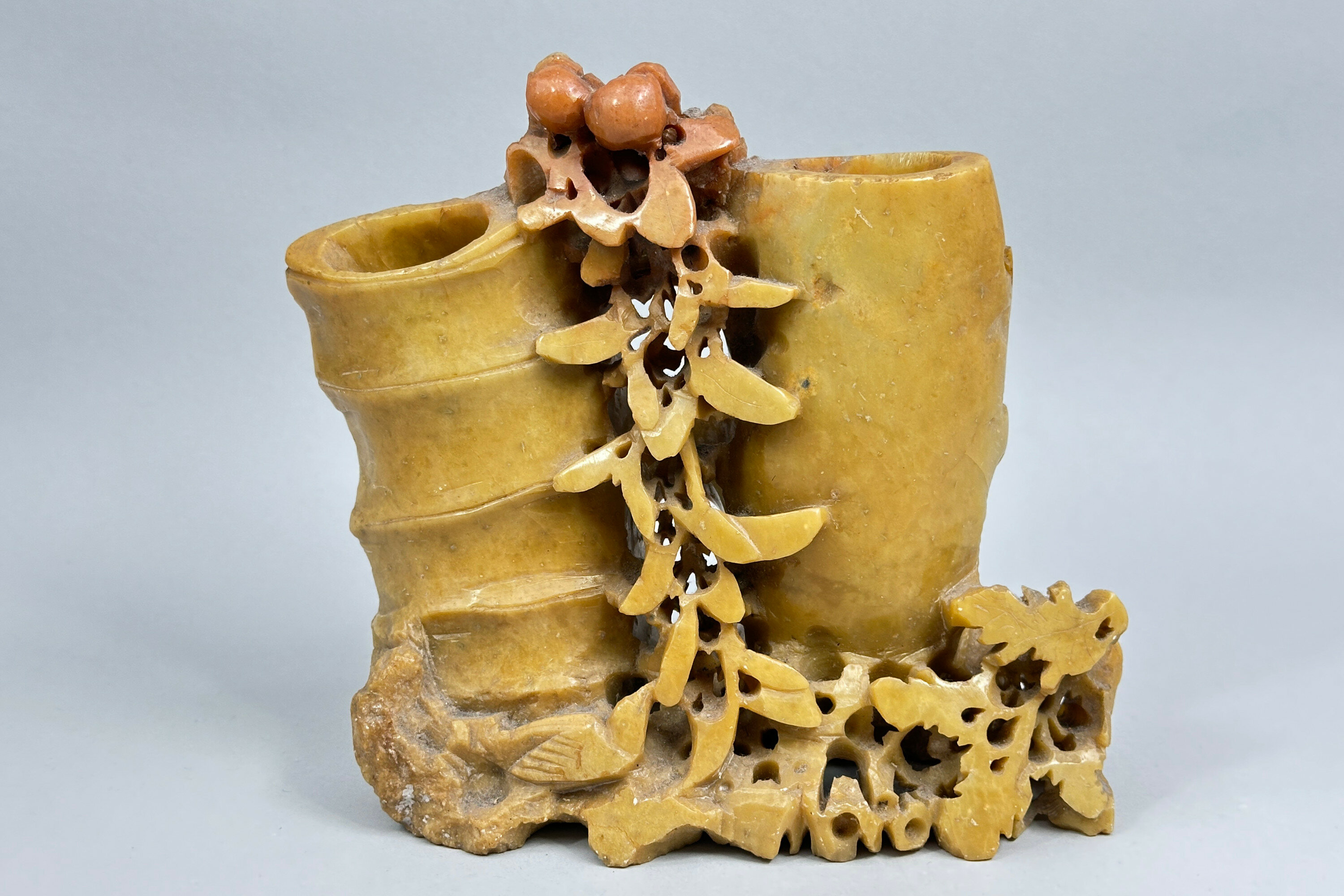
Chinese Soapstone Double Brushwasher, C20th
Price: £45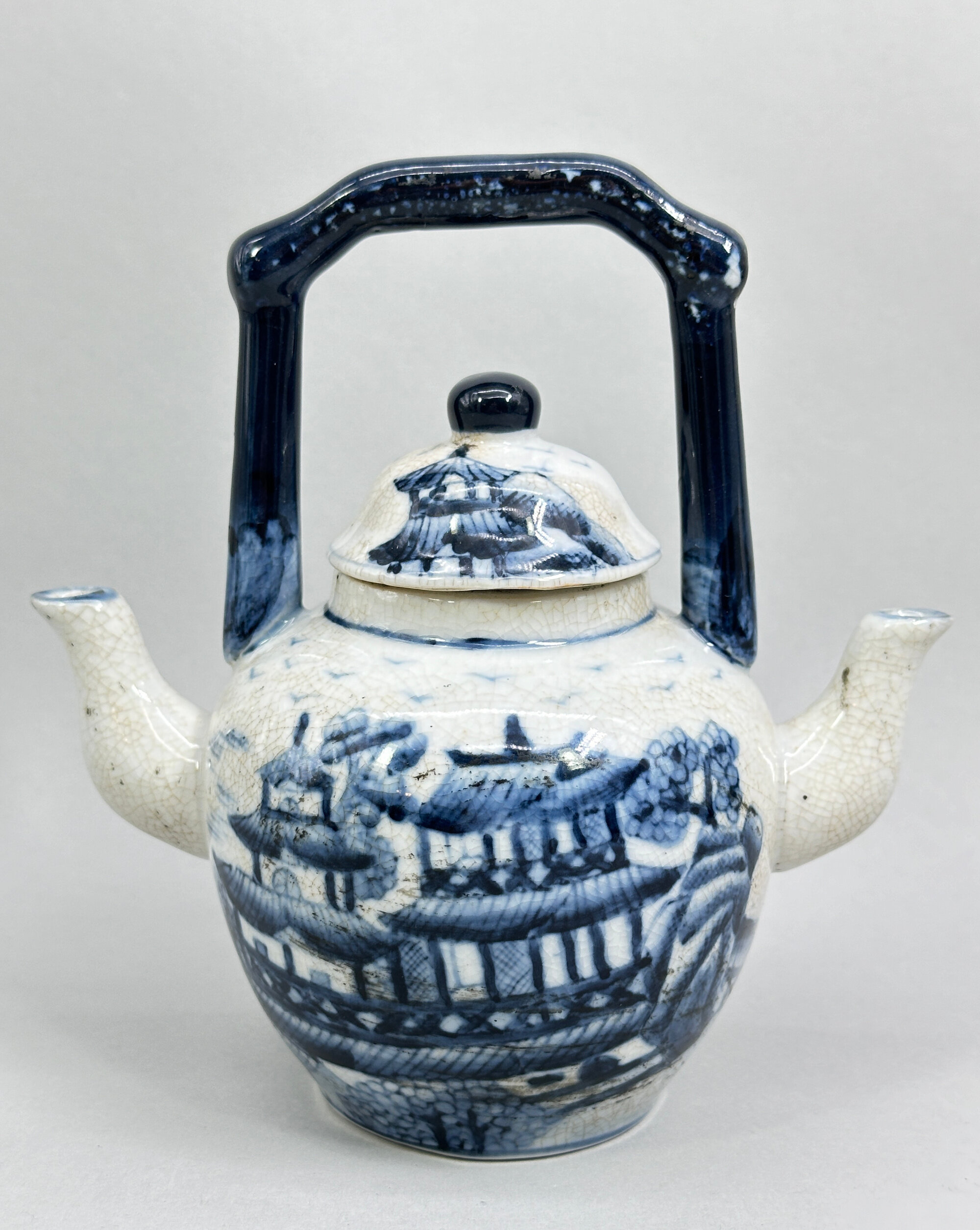
Chinese provincial double spout Teapot, early C20th
Price: £55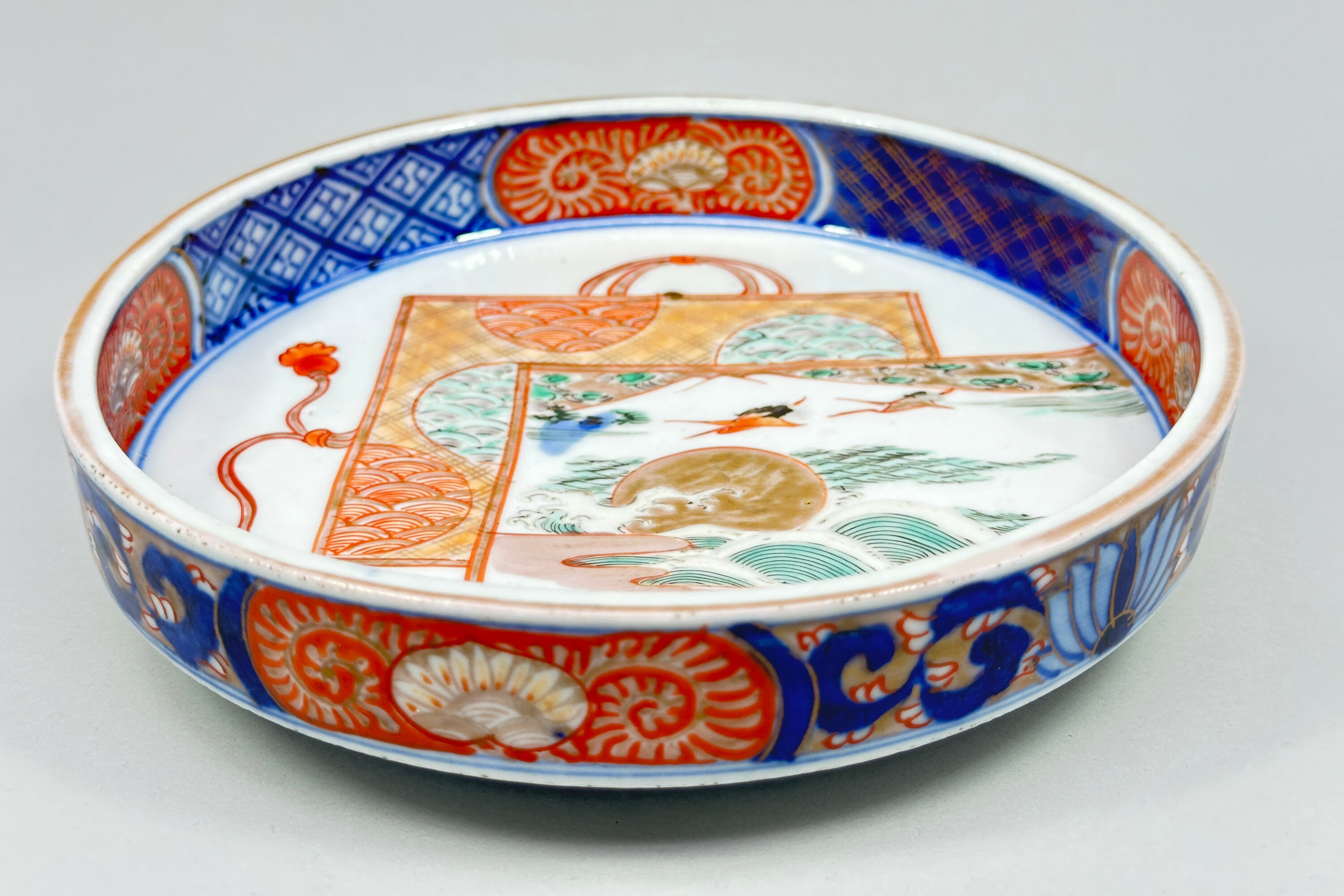
Japanese Arita shallow Bowl circa 1880
Price: £55The town of Arita in the former Hizen Province, northwestern Kyūshū island, was a major centre for the production of porcelains in Japan. Best known for blue and white pieces it also produced polychrome wares as well, including the familiar Imari colourings. While similar to Imari, the wider palette of colours used here is usually termed ‘Arita’ and this bowl employs not only the colourings but also many of the decorative elements found in these wares. The angular form, though, is unusual. Dating is to the Meiji era (1868-1912) probably around 1880.
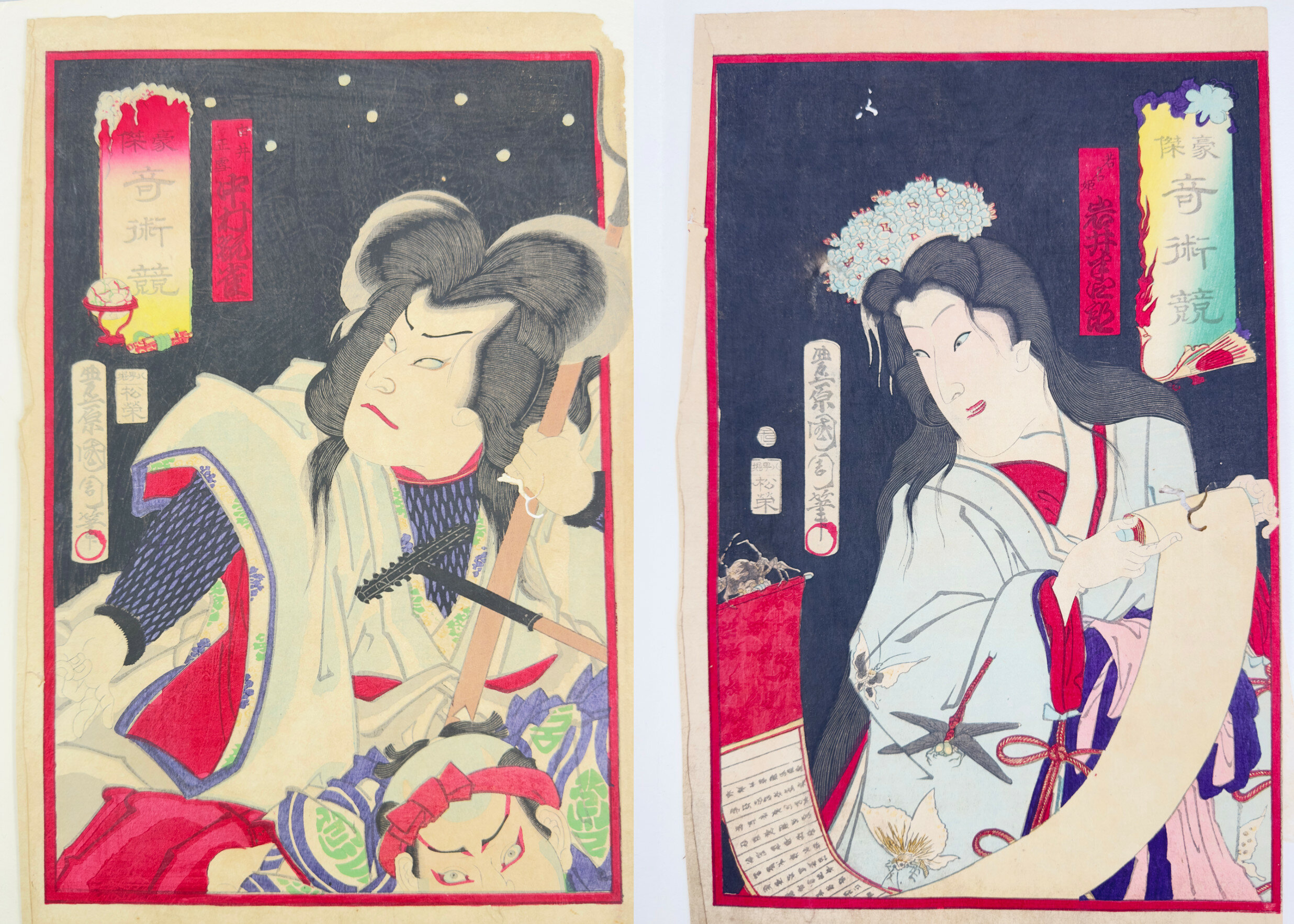
Two Japanese Woodblock Prints by Toyohara Kunichika, second half C19th
Price: £75Toyohara Kunichika achieved great fame and distinction a Japanese print artist. Born in 1835 he studied under Toyohara Chikanobu and then Utagawa Kunisada (also known as Utagawa Toyokuni III) eventually using a combination of both his teacher’s names to create his own professional one. At first he worked within Kunisada’s studio and when his teacher died in 1865 was asked to design two memorial portraits of him. The beginning of the Meiji era (1868-1912) saw Kunichika issuing his own prints, often in themed series and he became known in particular for his portrayals of kabuki actors, indeed he regarded the theatre as almost his second home. A contemporary once wrote ‘"Print designing, theatre and drinking were his life and for him that was enough.’ He achieved great fame and was rated as one of the masters of woodblock printing. Contemporary observers noted Kunichika's skilful use of colour in his actor prints, but he was also criticized for some of his choices for unlike most artists of the period, he made use of strong reds and dark purples rather than the softer colours used previously, exploiting the recent import of new dyes from Germany. Red, for the Japanese, meant progress and enlightenment so there was probably hidden meaning here. Eventually Kunichika’s lifestyle took its toll and he died in poor health, aged 65. It had been a Japanese custom for people of high cultural standing to write a poem before death. Kunichika's own, inscribed on his grave, reads ‘Since I am tired of painting portraits of people of this world, I will paint portraits of the King of hell and the devils.’ For many years his prints fell out of favour but interest has now revived and Kunichika is regarded as one of the eminently collectible Japanese artists in the field and these two prints are an excellent example of his work.
Each print is accompanied by a printed text on fine paper which presumably describes the character represented. The second of them is accompanied by two sheets one of which has become attached in one small place to the print itself but could probably fairly easily be detached by a restorer. In general there are some typical signs of age with minor losses (illustrated), tears and folding but the colours remain bright and fresh.

Japanese Fukagawa Jug and Stand decorated lotus, signed, circa 1900
Price: £45The Fukagawa kilns produced the best quality Imari items made in Japan in the late nineteenth century for export to the West. Their history starts with Ezaiemon Fukagawa who in 1856 became head of his family's porcelain business and in 1875 founded Koransha (The Company of the Scented Orchid) in Arita, Japan, to produce tableware for export. In 1894 the modern Fukagawa company was founded by Chuji Fukagawa, with the Fukagawa trade mark of Mount Fuji and a stream, as its trade mark. Dating of these pieces is therefore towards the end of the Meiji period (1868 - 1912) probably around 1900. While the decoration is similar to that found on other Fukagawa pieces there are few, if any parallels, and tea ware pieces by the firm are not very often seen.
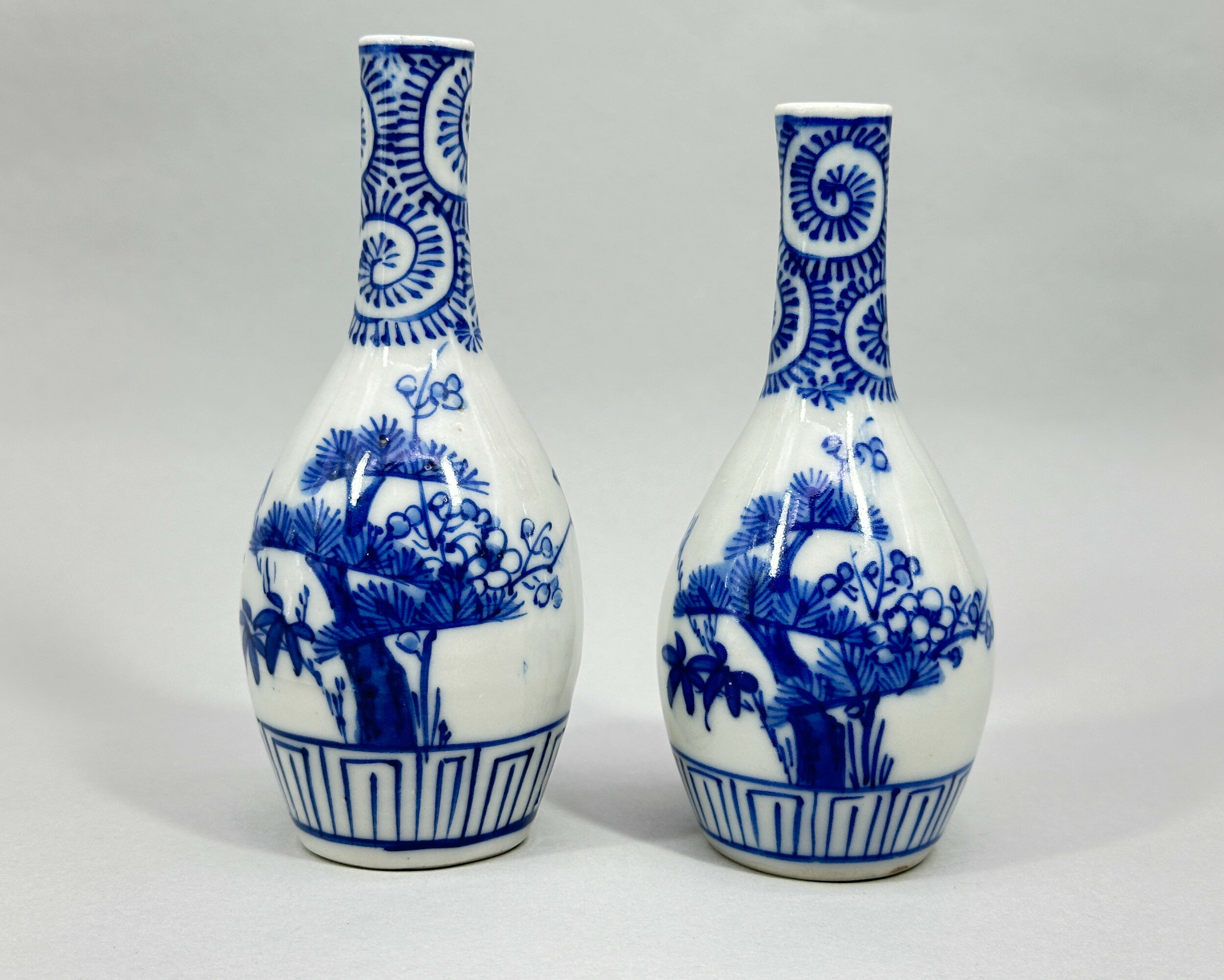
Pair of small Japanese Arita Blue and White Bottle Vases, circa 1880
Price: £55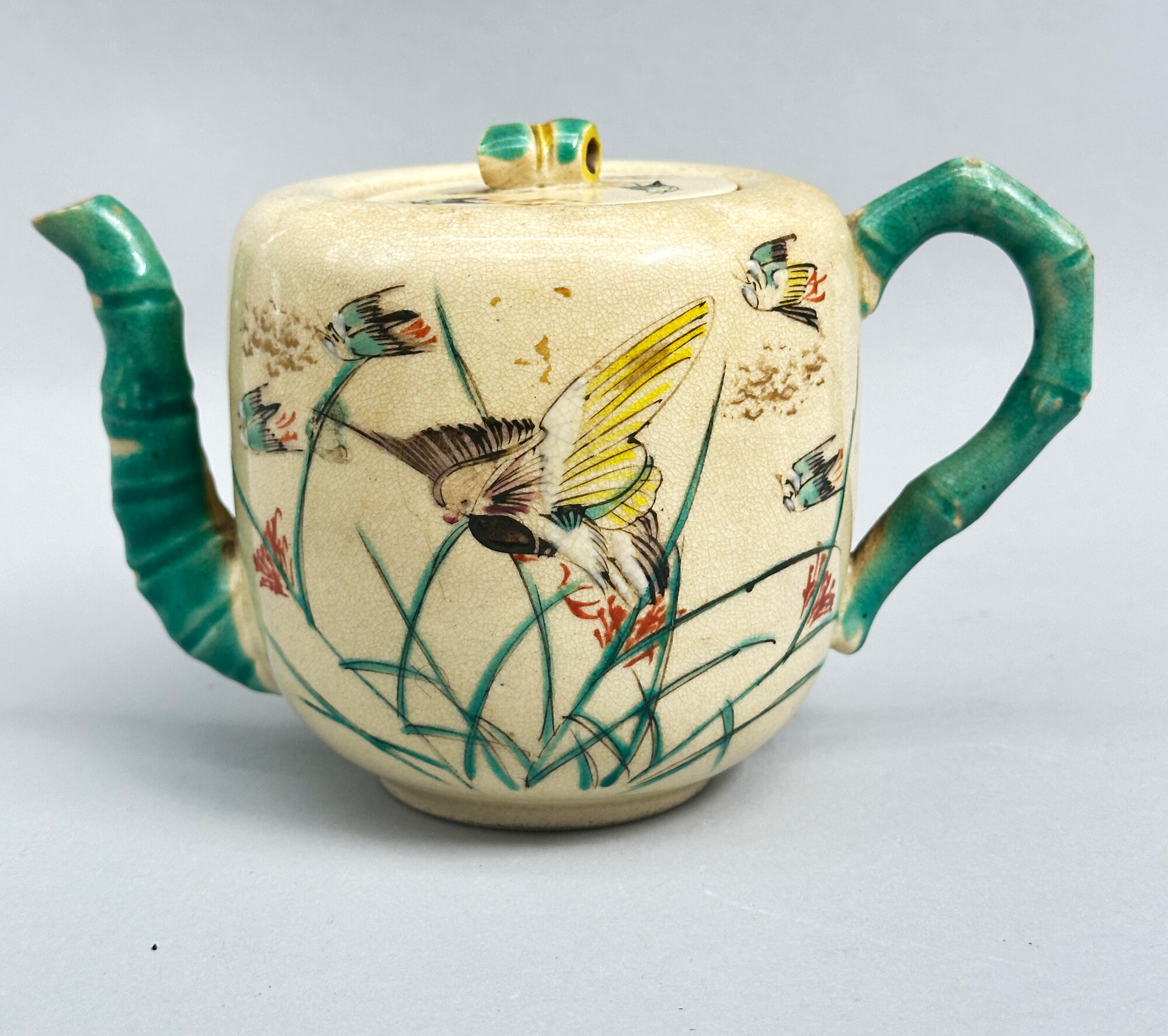
Japanese Awata ware Teapot and Cover, signed, circa 1900
Price: £25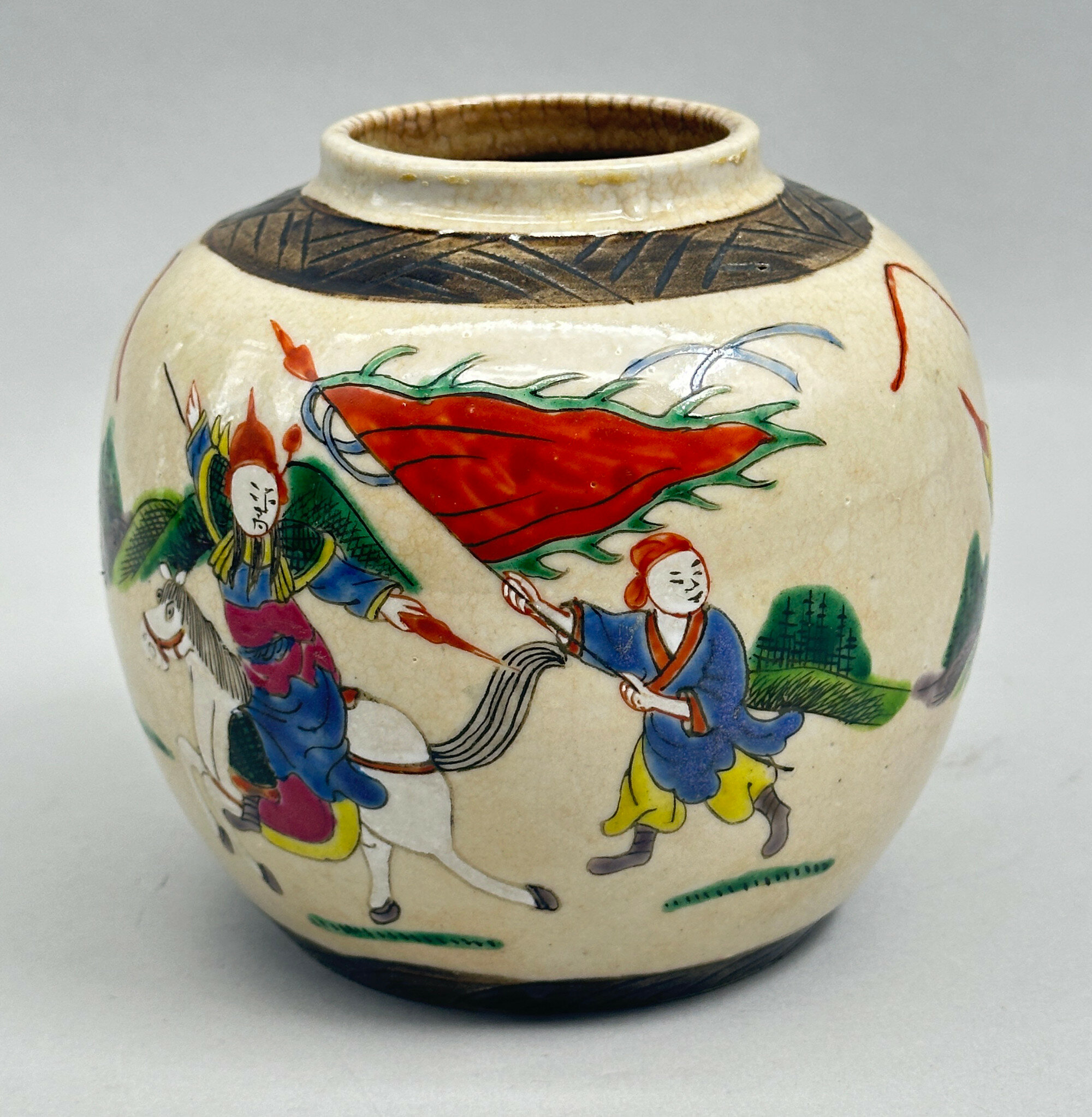
Chinese Crackleware Ginger Jar decorated with Warriors circa 1900
Price: £25'Crackleware' glazed pieces, usually with 'bronzed’ bands, were a staple output of the Chinese potteries from the mid nineteenth century onwards and were produced in a wide variety of mainly vase shape forms, both in polychrome and blue and white and intended as decorative pieces for the Victorian rooms of the West. As with other ceramic types, the quality deteriorated and this piece is typical of the late productions with a more modest level of craftsmanship but still retaining a naif charm. As with many ginger jars, this one lacks its original domed cover which would have been decorated to match.
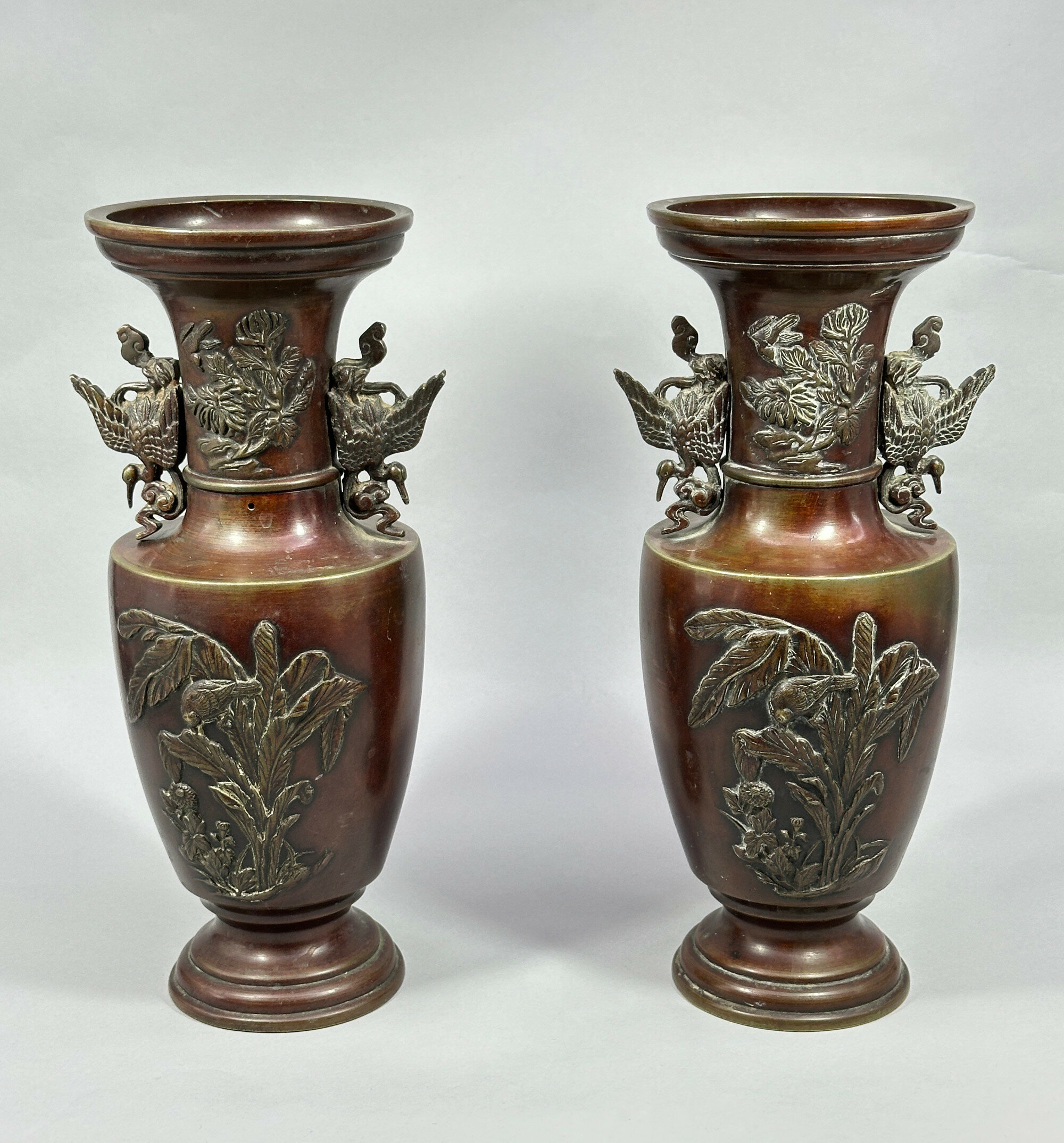
Pair of fine quality Japanese Bronze Vases decorated birds, circa 1880
Price: £220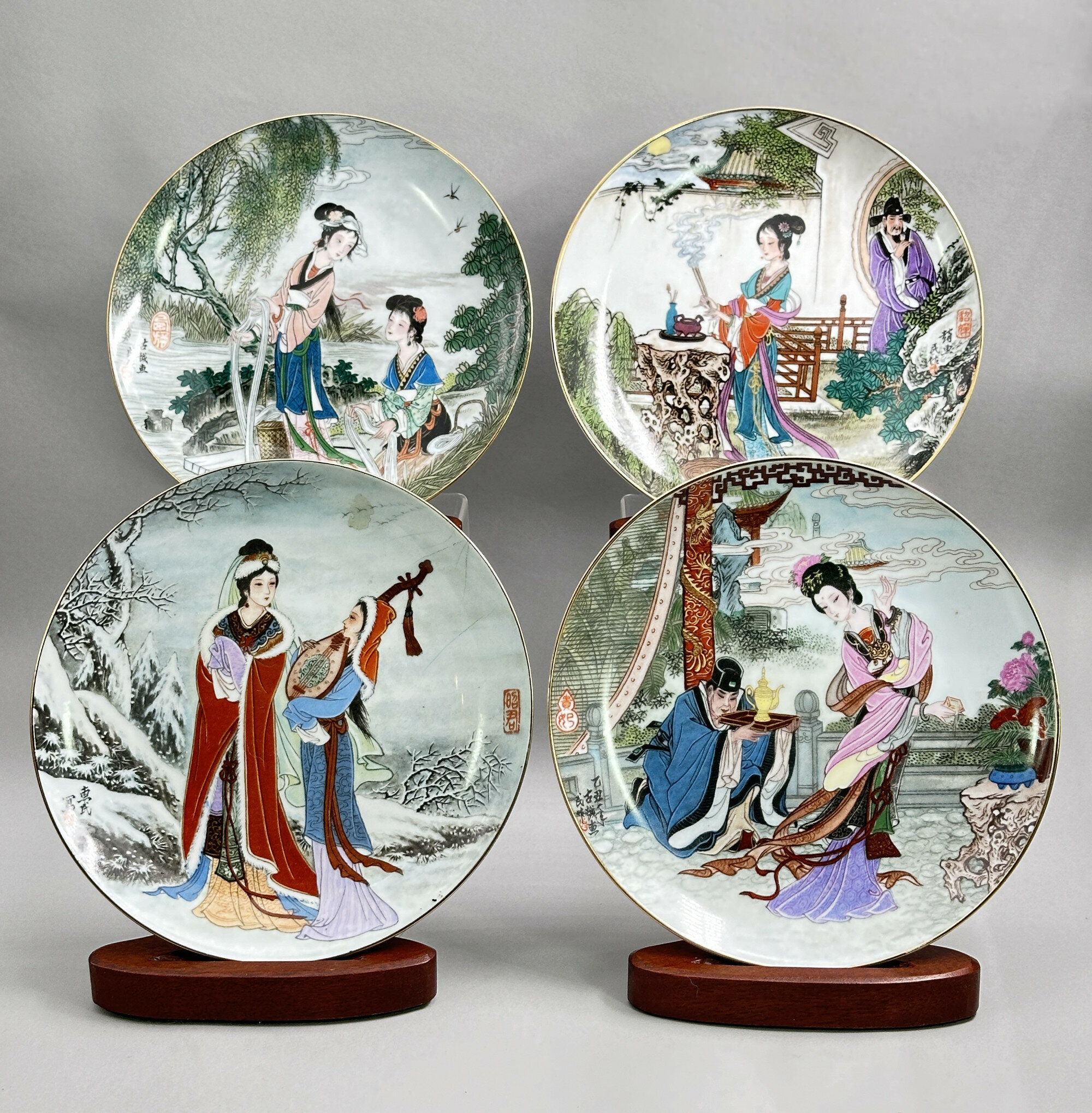
Set of Japanese Plates decorated with Geisha in landscape scenes, late C20th
Price: £40Please note that the stands are for display purposes only.
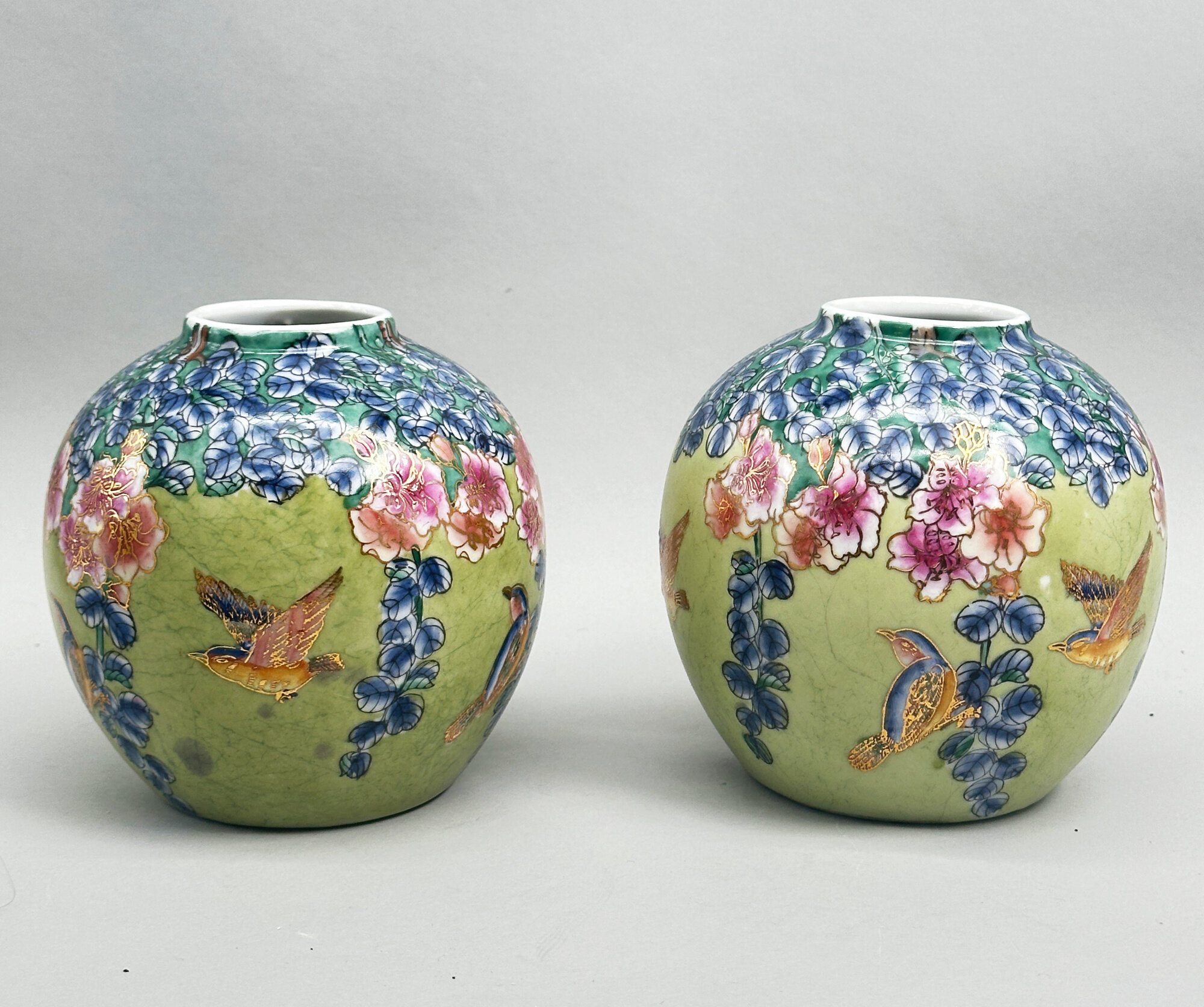
Pair of Chinese Ginger Jars decorated Birds and Flowers, late C20th
Price: £45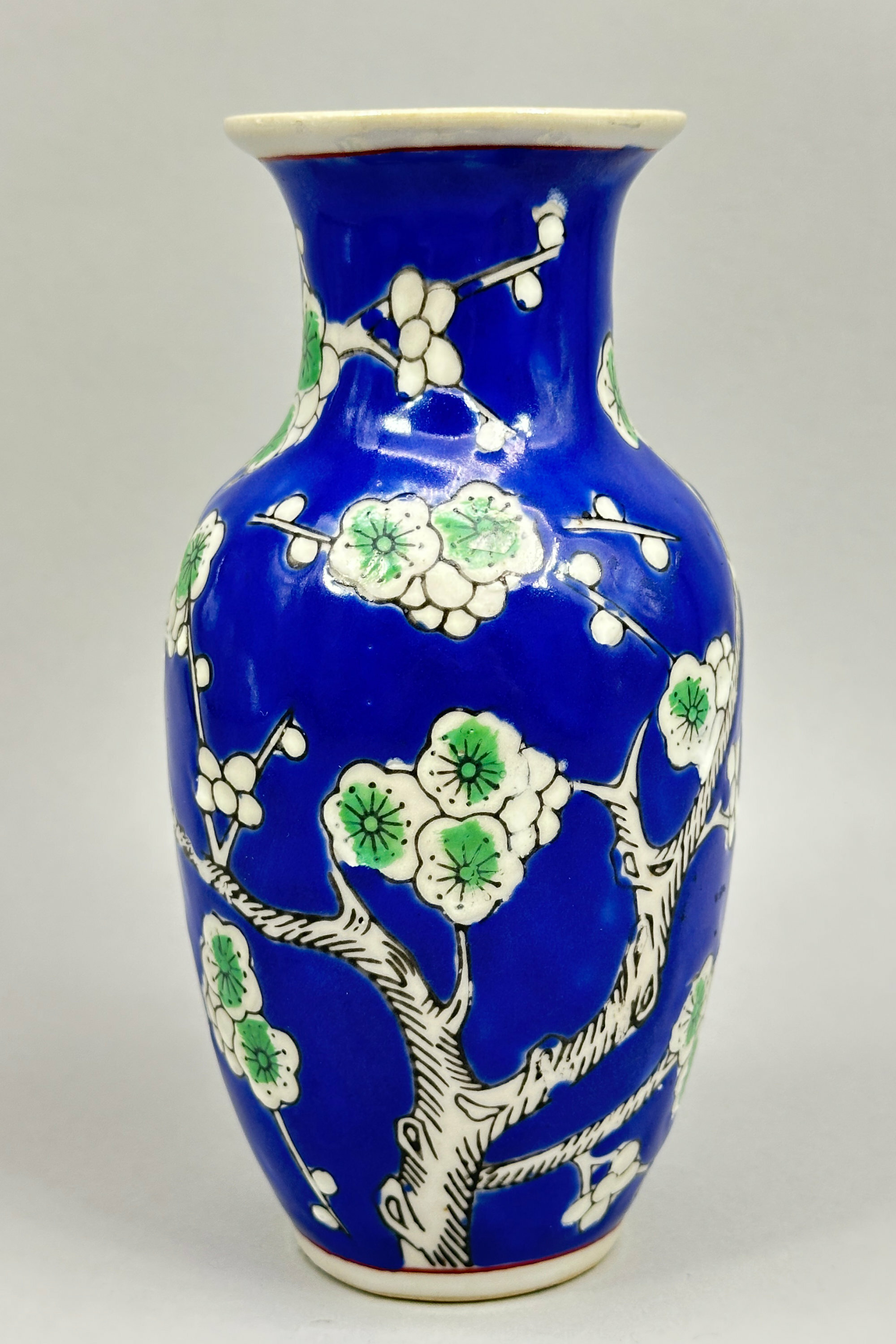
Chinese blue ground Vase decorated Prunus, late C20th
Price: £25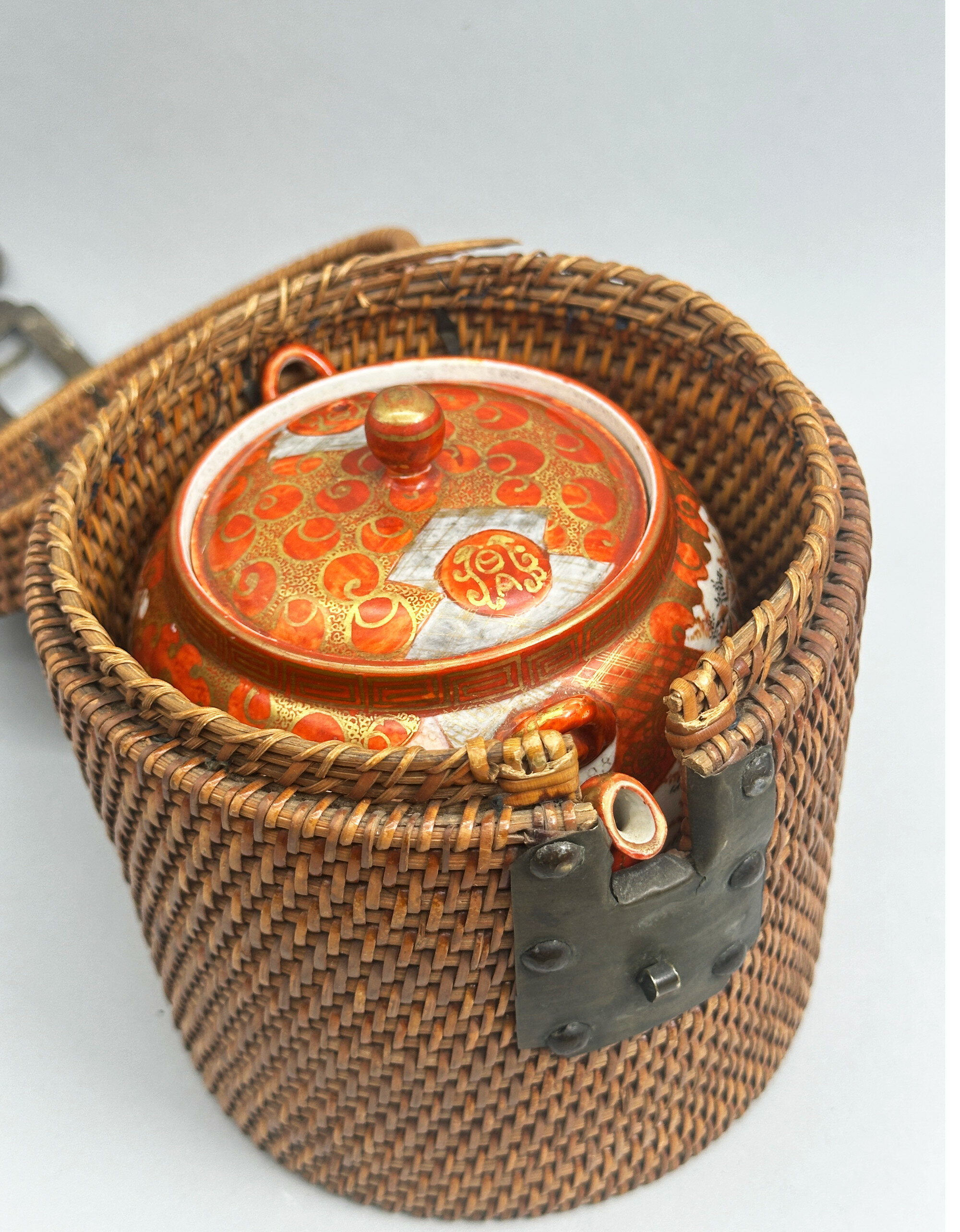
Japanese Kutani Teapot in a carrying Basket, circa 1900
Price: £45Kutani (the word means 'nine valleys') porcelain was made at various factories in the former Kaga province of Japan. The earliest pieces were in a completely different style employing a palette of colours emphasising green, the so called 'Ko Kutani'. Production of this ceased around 1730, and manufacturing was not revived until the early nineteenth century when the more familiar colourings of iron red and gold were introduced. Vases, bowls and plaques are found in this style but also teapots of which this is a typical example. The decoration is of birds and flowers on a faintly craquelure glaze ground and the lid has a complementary ‘brocade pattern’ design. The base has a two character mark reading ‘ku’ ‘tani’ as is often found. The basket is of tightly woven wicker with the metal fitments as described and is probably Chinese in common with many similar examples, although the Japanese did, of course, have a basket weaving tradition of their own. Slight damage means that the ensemble has to be of decorative value rather than practical use but it remains an interesting and entertaining souvenir item from the orient.
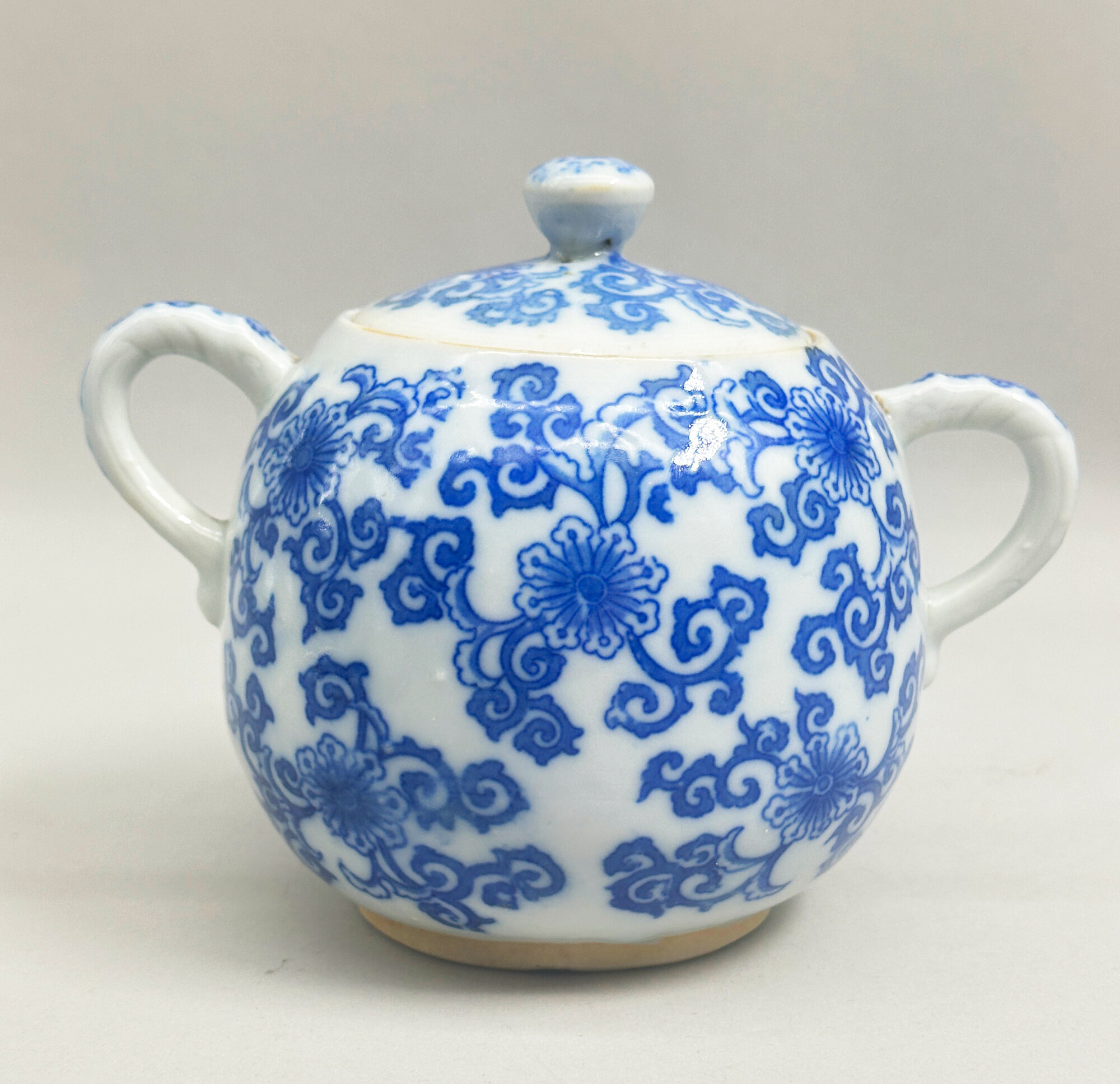
Japanese Blue and White Sugar Bowl and Cover, first half C20th
Price: £25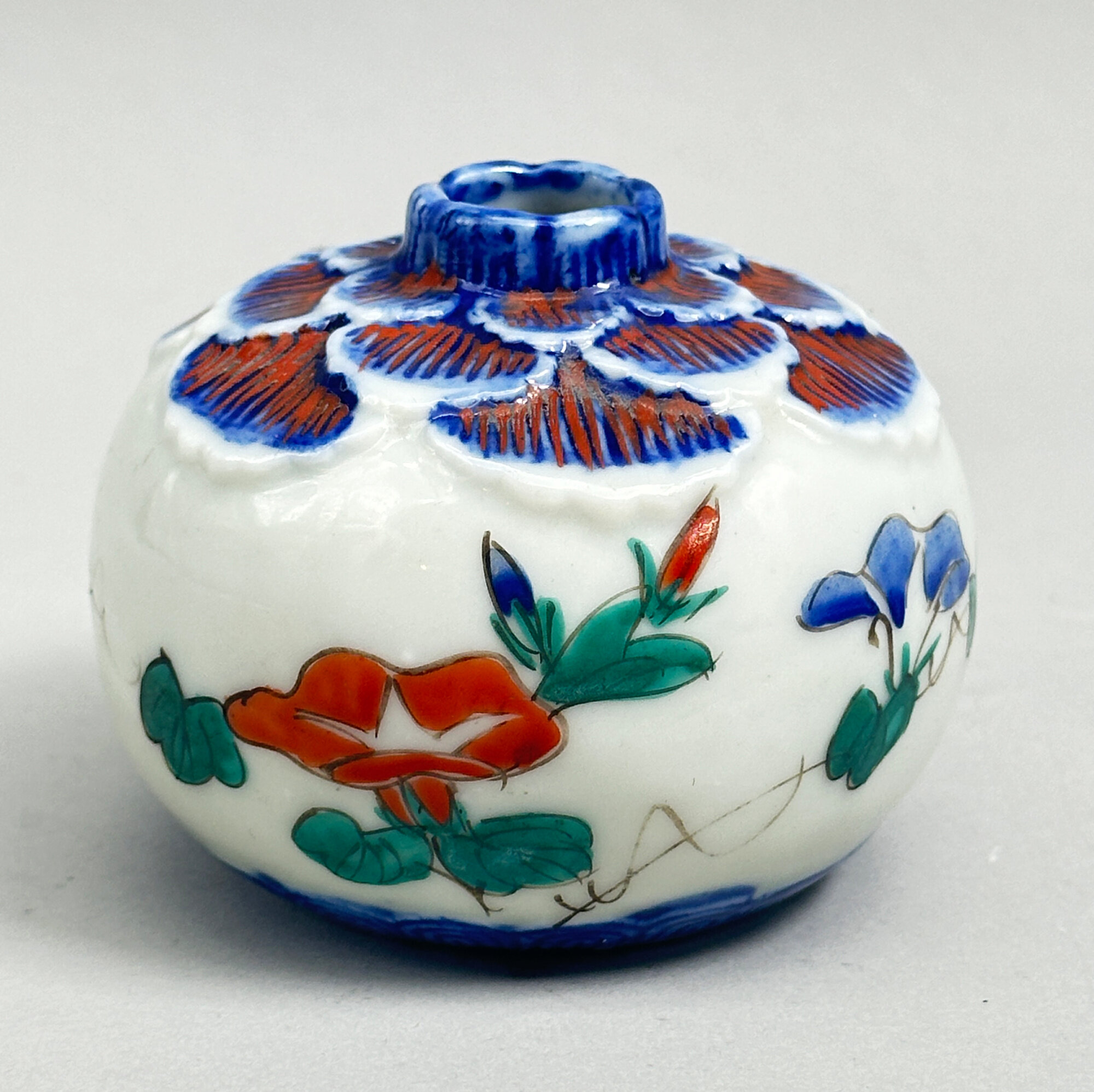
Chinese lotus form Water dropper, C20th
Price: £25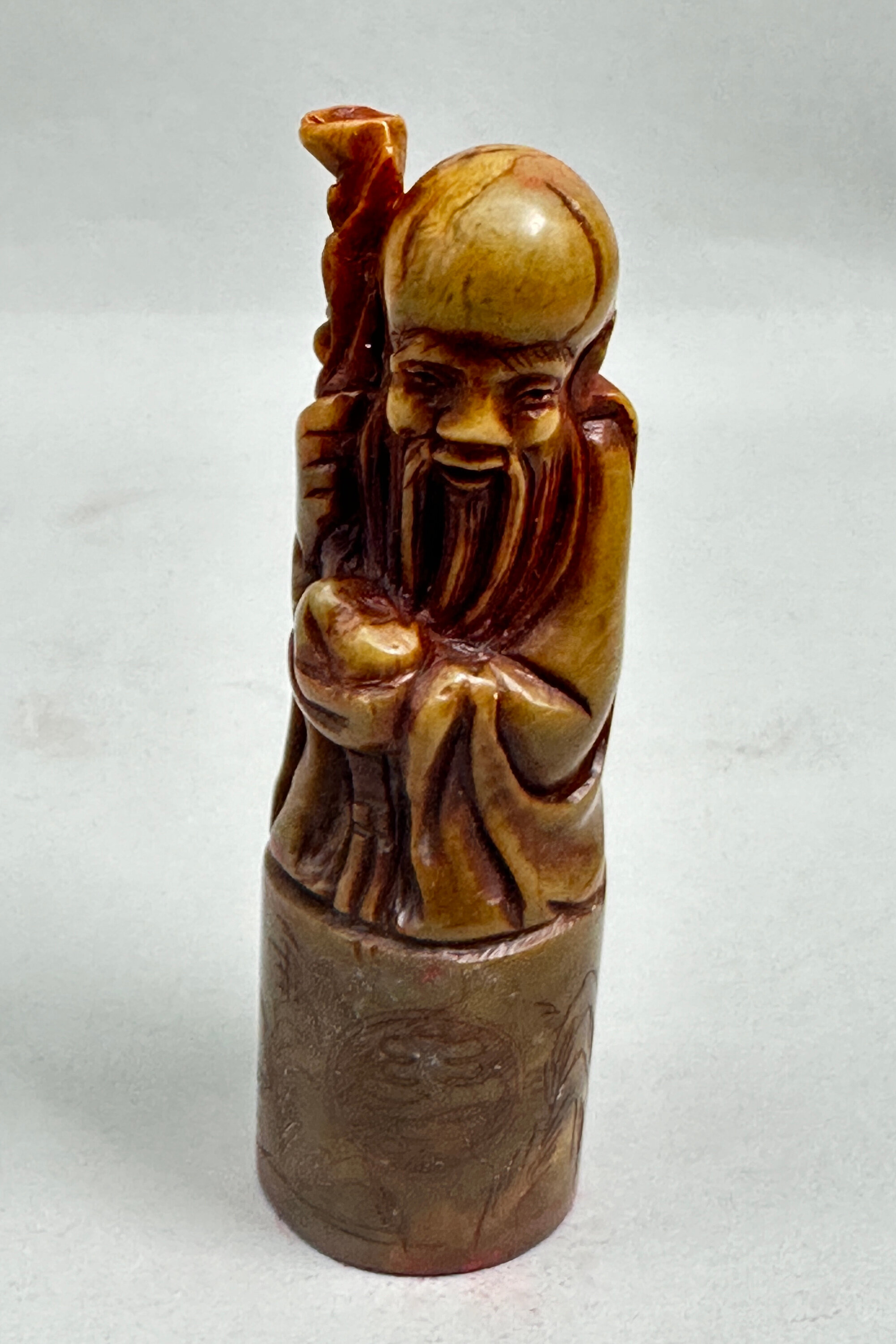
Chinese Soapstone Seal with Shou Lao, C20th
Price: £45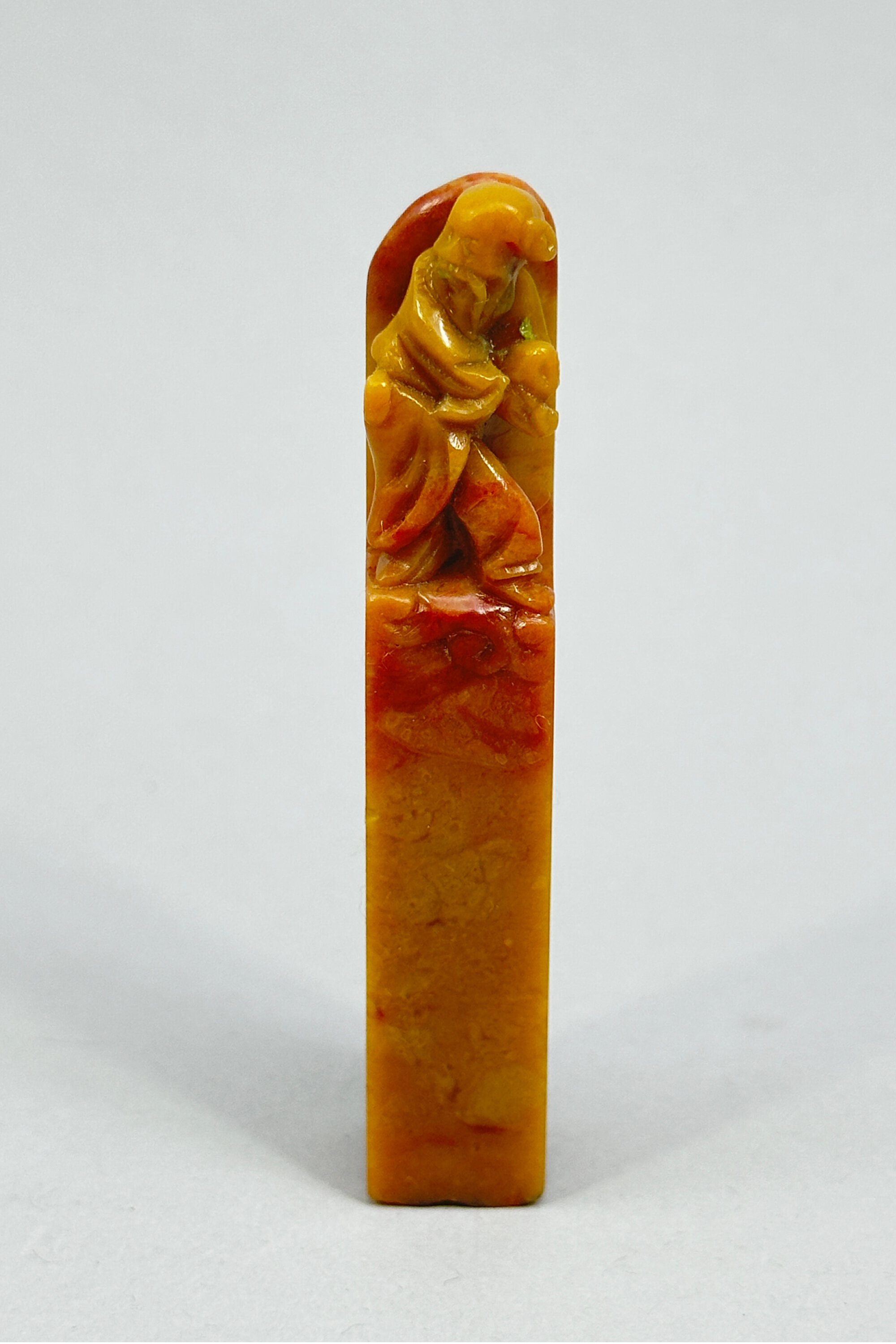
Chinese Shoushan Soapstone Seal with the characters A.H., C20th
Price: £45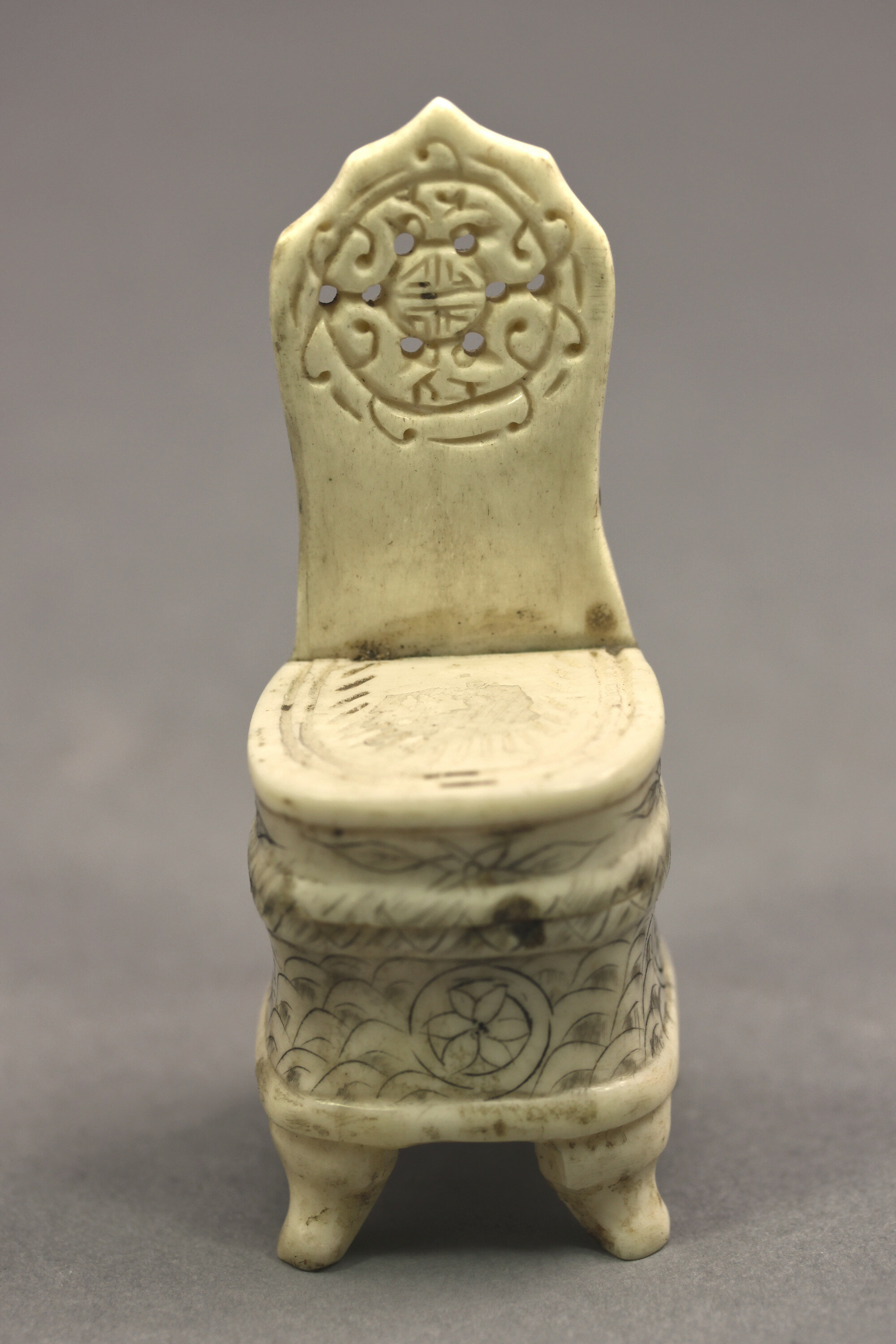
Chinese Bone Inkwell in the form of a Chair, early 20th century
Price: £25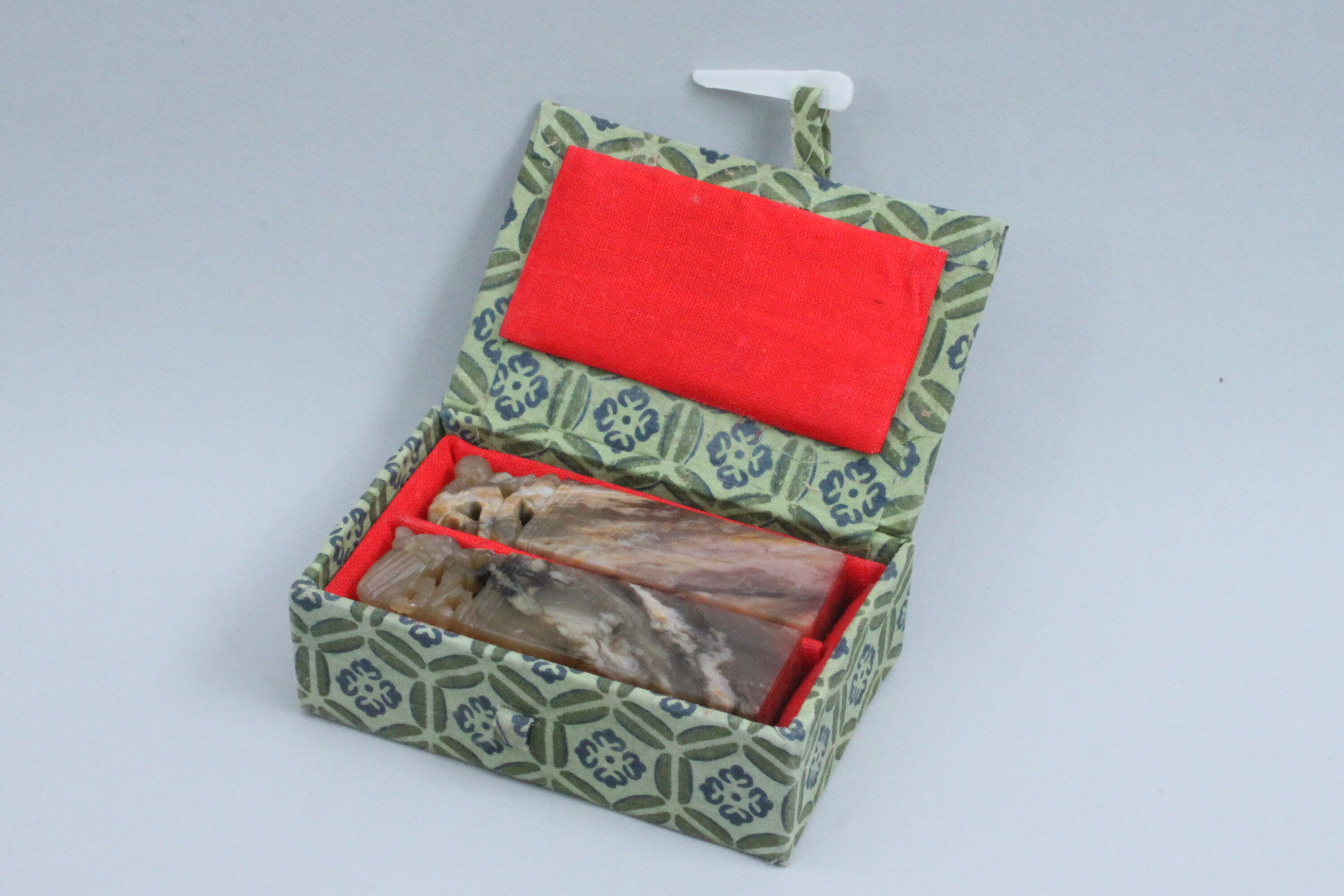
Pair of Chinese Soapstone Seals in a fitted box, C20th
Price: £45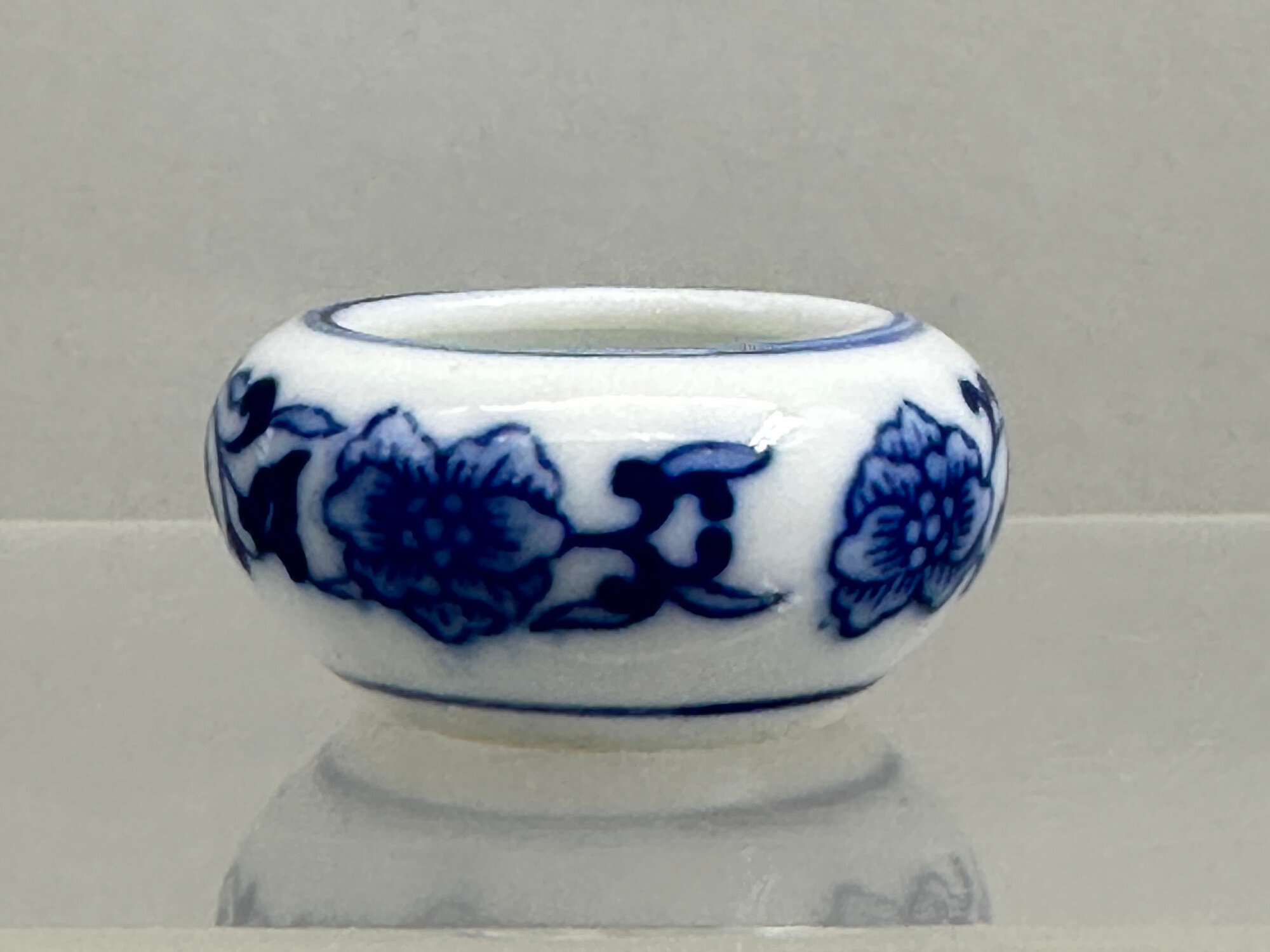
Small Chinese Blue and White Brushwasher, C20th
Price: £25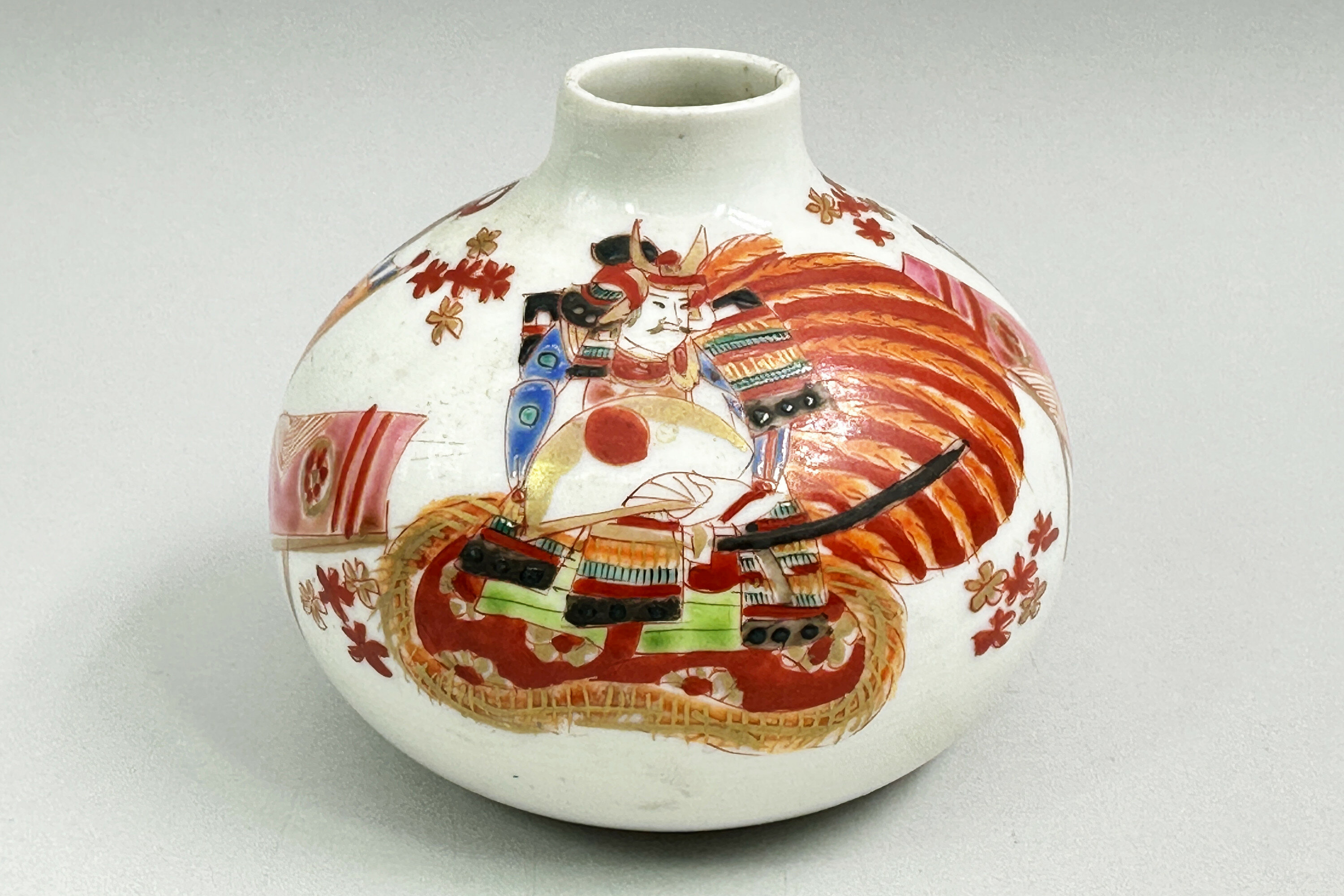
A Japanese Hichozan Shinpo Brushwasher circa 1880
Price: £25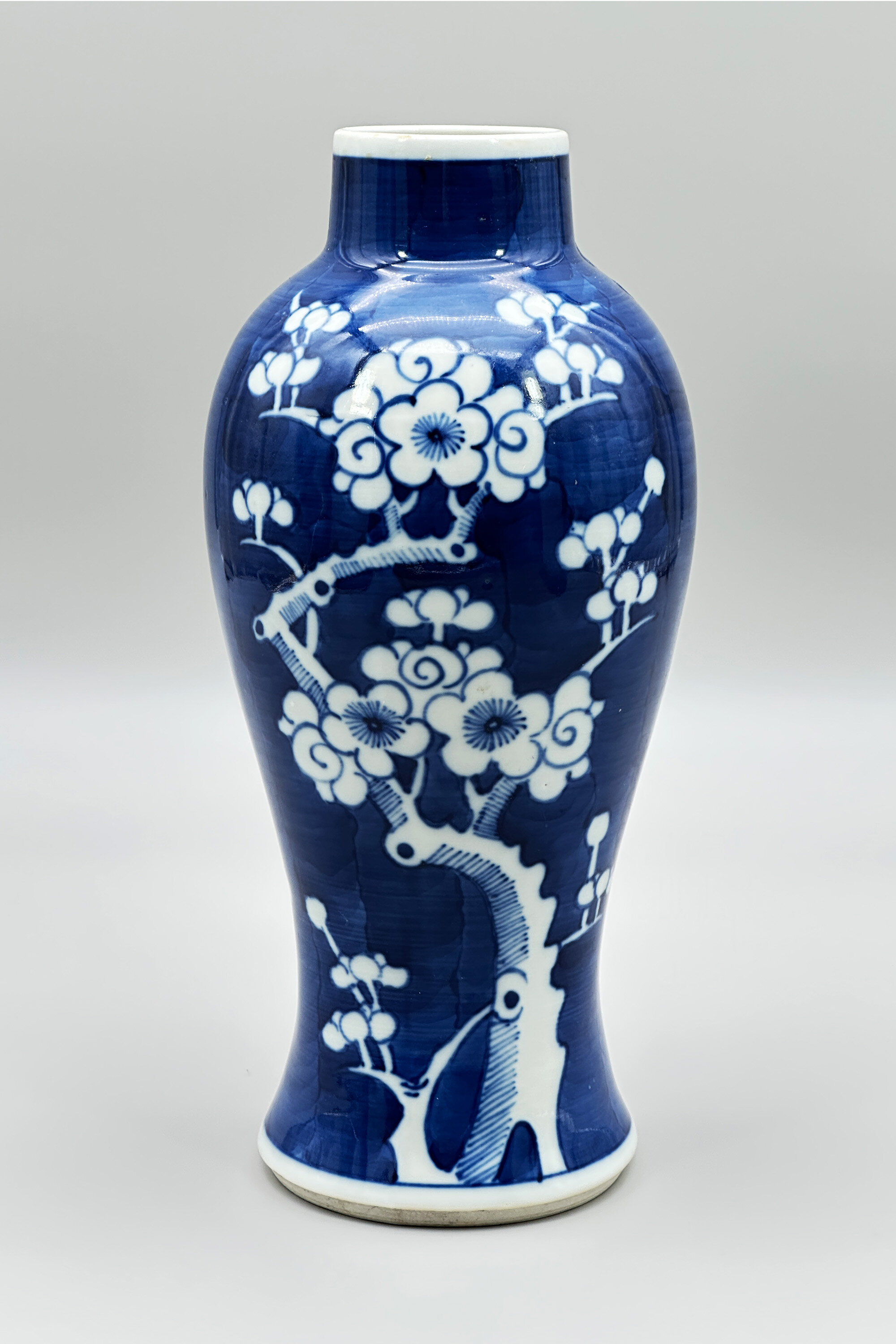
Chinese Blue and White Vase decorated with flowering Prunus circa 1900
Price: £55Flowering prunus or plum blossom is one of the most iconic of the decorative designs used by Chinese potters and first appears in the Kangxi period (1662-1722). Kangxi ginger jars in the pattern were highly prized by Victorian collectors with one example, the legendary ‘Huth’ jar, fetching 5900 guineas, a little over £6000, at auction in 1905, a price equivalent to over a quarter pf a million pounds today. The tree symbolises perseverance and renewal and was usually shown against a pattern of ‘cracked ice, representing the end of Winter and the beginning of Spring. Branches of plum blossom convey the ‘Five Blessings’ : longevity, wealth, health, love of virtue and a peaceful death. The number five was an auspicious number for the Chinese and is reflected in the five petal form of the prunus flower.
Once evolved, the design was continuously repeated by Chinese potters and is even produced today. Many of late nineteenth century pieces display a rather more slapdash interpretation of the pattern as here where the ‘cracked ice’ of the eighteenth century pieces is replaced by the repeated brush strokes of a blue wash ground and the painting of the tree itself is sketchy. The style of decoration and the paste of the foot indicate a circa date to around 1900, but this modest interpretation of centuries old pattern still possesses a charm of its own.
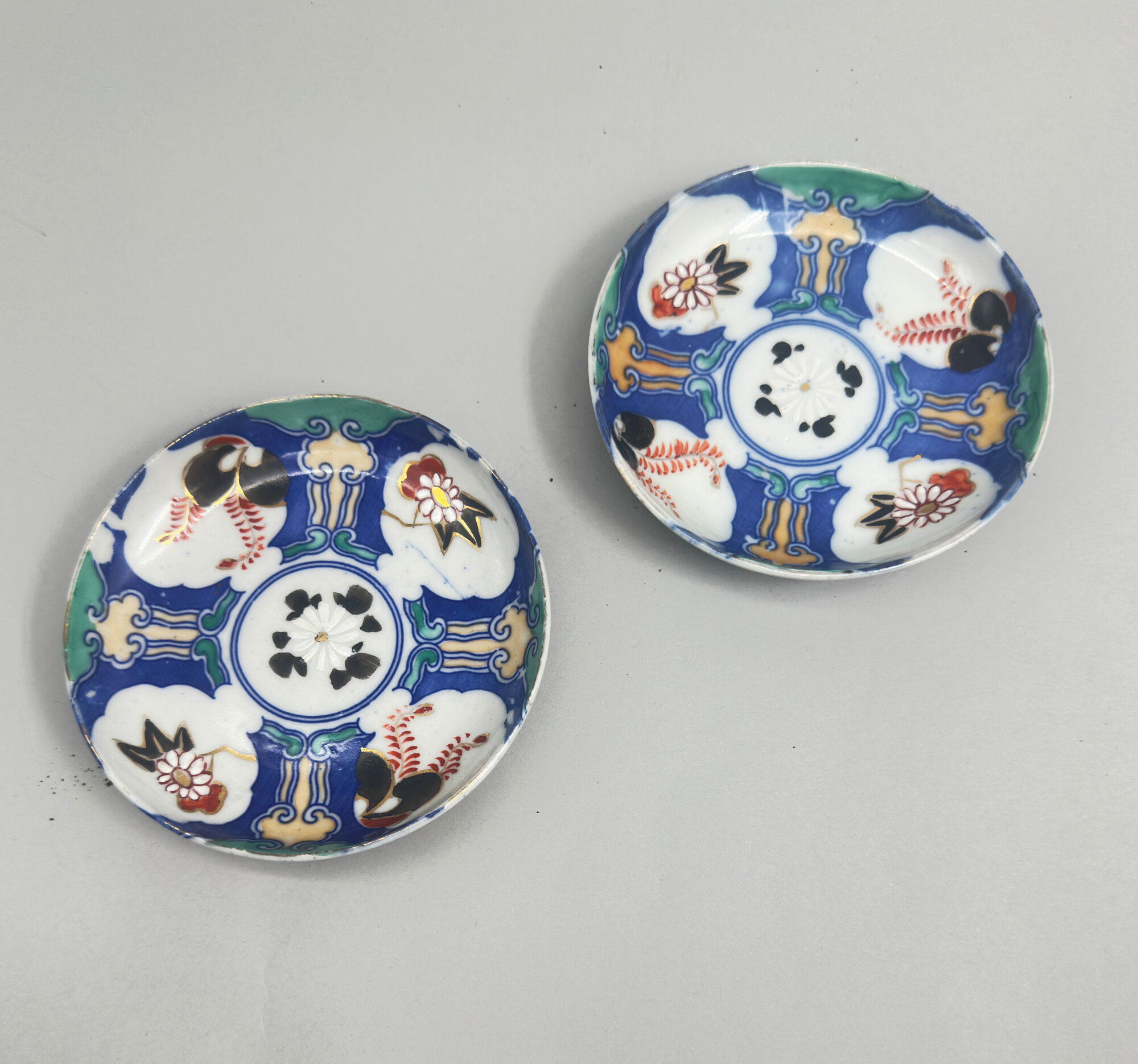
Pair of Japanese Arita small Dishes circa 1880
Price: £40The town of Arita in the former Hizen Province, northwestern Kyūshū island, was a major centre for the production of porcelains in Japan. Best known for blue and white pieces it also produced polychrome wares as well, including the familiar imari colourings. While similar to Imari, the wider palette of colours used here is usually termed ‘Arita’ and the decorative appeal of the style is clear. These bowls probably come from an original set of five and with slightly coarser decoration than usual were probably made for the domestic market. The paste of the foot implies a dating to the Meiji era (1868 - 1912) probably around 1880.
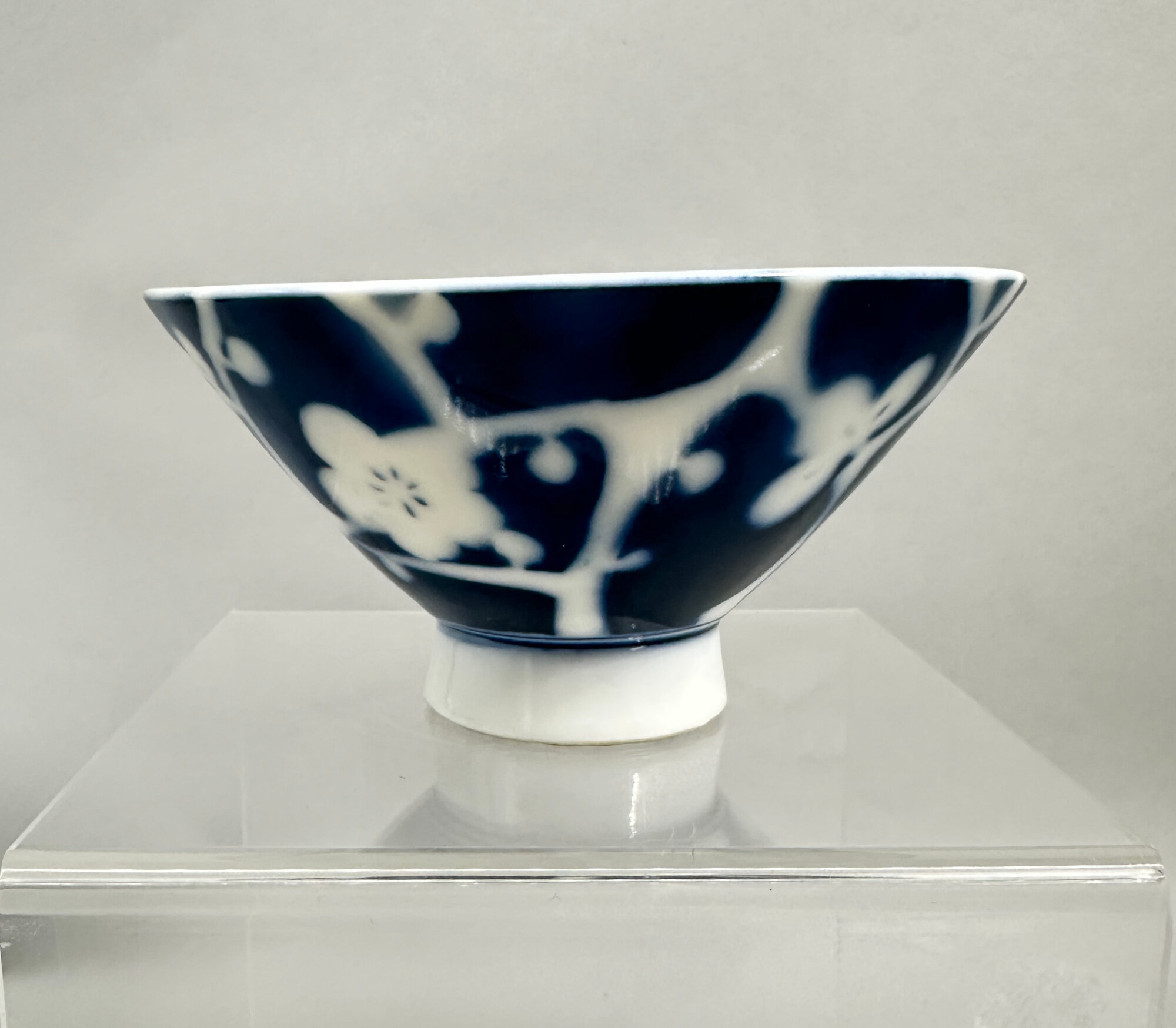
Japanese blue and white hat shape small Bowl with flowering prunus, C20th
Price: £25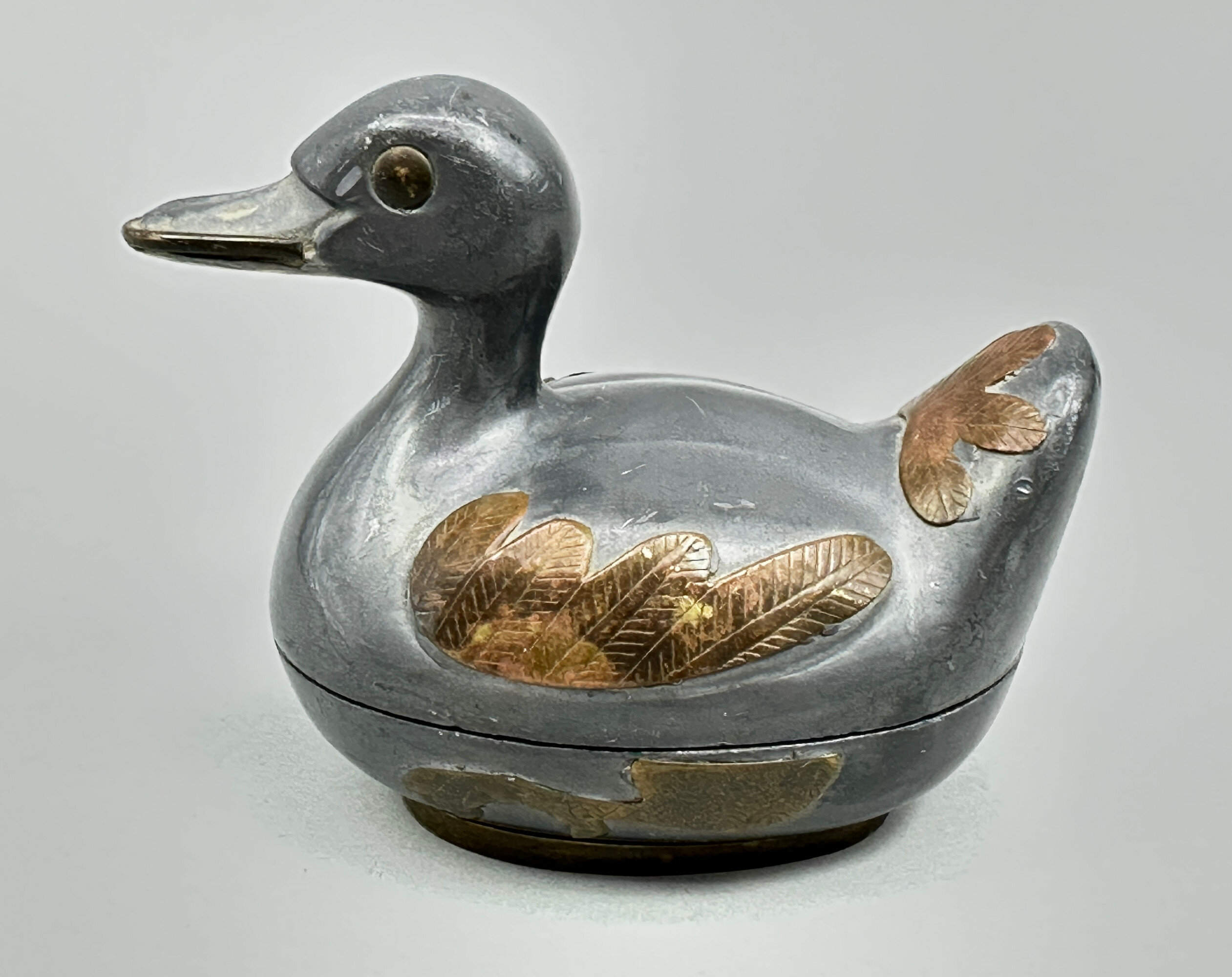
Pewter and brass box and cover in the form of a Mallard Duck, Gatco, Hong Kong, 1960s
Price: £25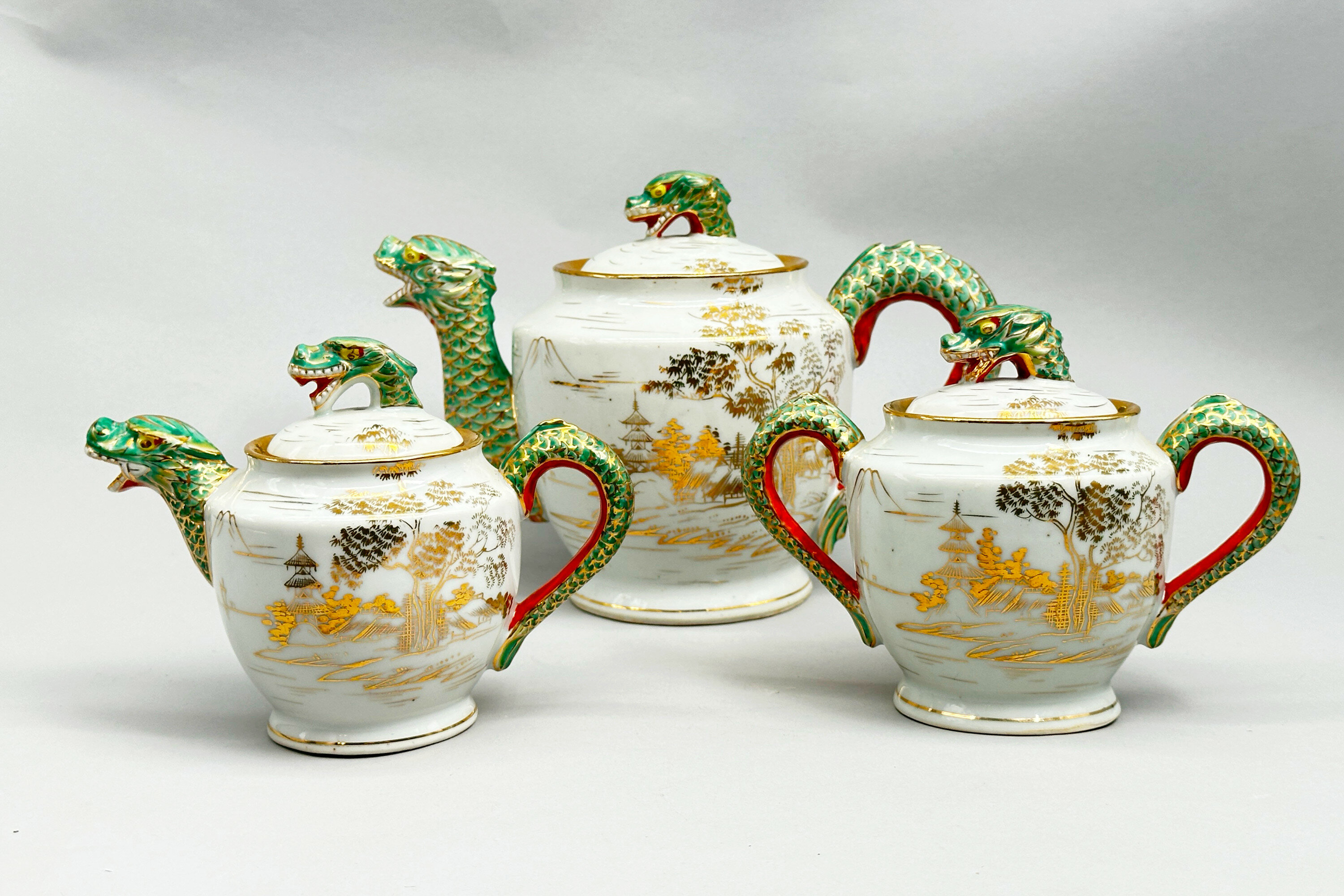
Japanese Kutani Part Tea Service circa 1920
Price: £75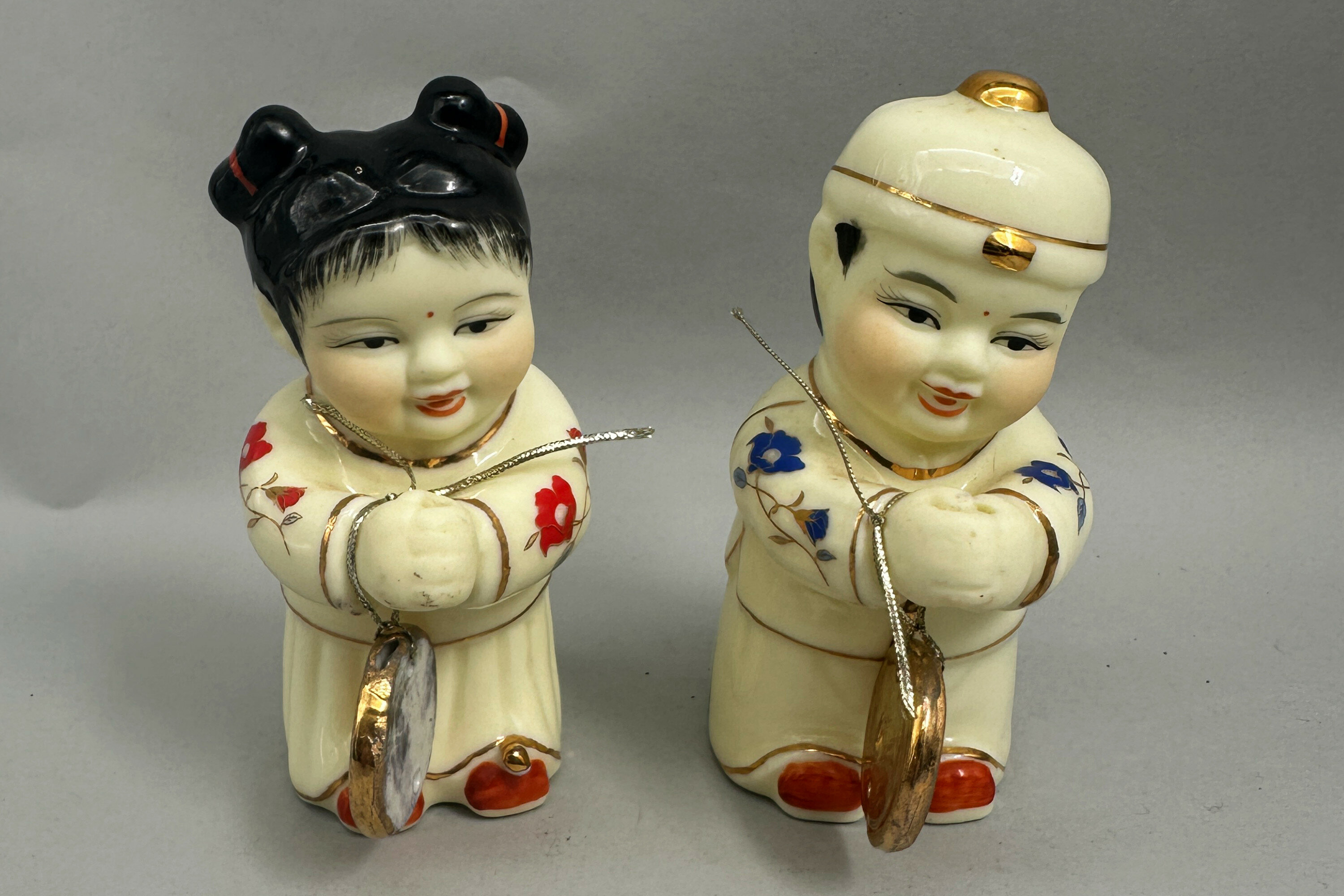
Decorative pair of Chinese ceramic figures of children, Yunu and Jintong , late C20th
Price: £45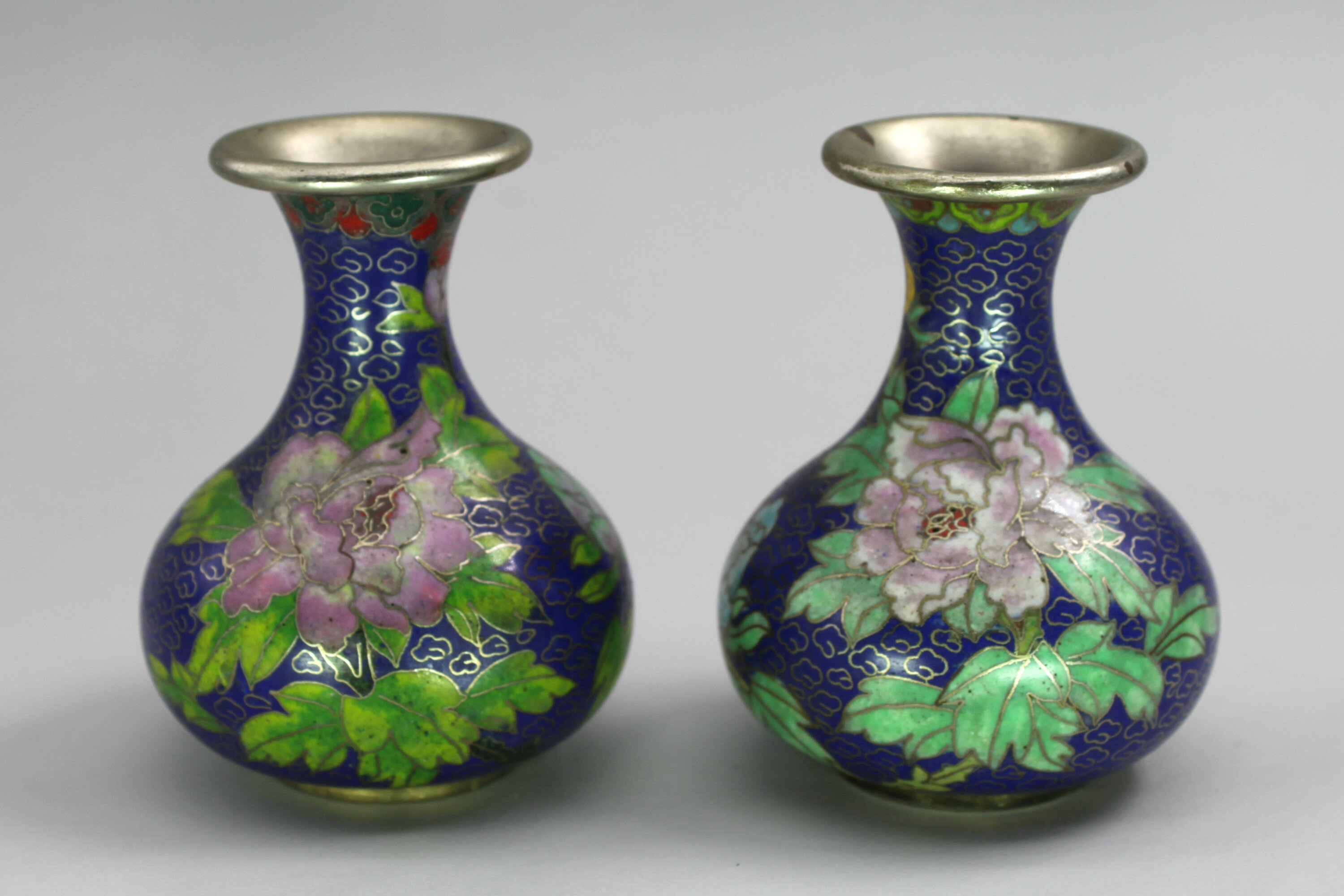
A Matched Pair of Chinese Cloisonne Bottle form Vases circa 1900
Price: £25